Becoming an astronaut is no easy task. While it is commonly known that studying well and staying fit are essential, there is more to it than meets the eye. Real astronauts haven’t always been the picture-perfect individuals we imagine them to be. So, how can you stand out and make your dreams of space a reality? Follow these instructions:
Yuri Gagarin – “Cedar”, Alexei Leonov – “Diamond”, Sergey Krikalev – “Basalt”, Svetlana Savitskaya – “Pamir-2”. Who among youngsters hasn’t, at least once, fantasized about becoming an astronaut and transmitting their own call signs from orbit to be heard by the entire world? Who hasn’t yearned to, at least once, don a spacesuit and venture into the shimmering abyss of outer space? It’s unfortunate that time wears away these dreams, aspirations dwindle, and we spend the rest of our lives confined to an air-conditioned office. However, with enough determination, all of this can be realized. So, if you’re not yet despairing, keep moving “onward and upward”, and we’ll guide you on how to achieve it.
Childhood, adolescence, youth
Our country has seen four women and 117 men venture into space. The youngest among them was German Titov, who embarked on his first space flight at the age of 25. Pavel Vinogradov, on the other hand, visited the International Space Station when he was already 60 years old. Sergey Krikalev holds the record for spending the most time in orbit, with a total of 803 days across six flights, while Valery Polyakov endured an uninterrupted stay in space for 437 days.
However, all these heroes once started out as regular boys and girls who simply had dreams of reaching the sky. Today’s aspiring schoolchildren also have plenty of opportunities to begin their journey towards space. One of the first steps to consider is joining circles and courses that focus on astronautics, astronomy, and flying. In any major city, there are numerous options available to choose from.

It is important to note that relying on the school curriculum is also beneficial, particularly in subjects like physics and mathematics. Participating in specialized educational programs can provide a wealth of useful knowledge. For instance, the Cosmonaut Training Center (CTC) located near Moscow offers educational excursions and comprehensive programs called “Meet Cosmonautics” for both children and their parents, lasting for several days. Some summer camps offer “Space” themed sessions, while universities, museums, and children’s art centers may host clubs and courses dedicated to this subject. It is crucial to emphasize the significance of physical health and fitness. While a student does not necessarily have to excel in sports, regular exercise and adequate physical activity are essential, as they can help address certain health issues at this age.
How to become an astronaut: a concise guide:
1. Acquire the appropriate education and gain relevant work experience.
2. Stay informed about the squadron’s recruitment announcements.
3. Submit your documents and await an invitation to the in-person assessment stage.
4. Successfully navigate the tests and interview.
5. Endure a rigorous two-year training program followed by additional years of preparation.
6. Get assigned to a crew and patiently anticipate the launch.
Even at this stage, it is important to begin considering which path to choose for a future in space. Broadly speaking, there are three options to consider: becoming a pilot, specializing in space technology, or pursuing a career as a doctor. The first option, becoming a pilot, seems to be the most dependable choice. Historically, the majority of Russian cosmonauts began their careers as pilots. Out of the total number of individuals who have been in space (which exceeds 550), 285 of them were pilots. Pilots are highly regarded professionals who are accustomed to handling increased loads and multitasking. They must pilot the aircraft, monitor numerous readings on the instrument panel, coordinate with partners, and visually control the horizon, among other responsibilities.
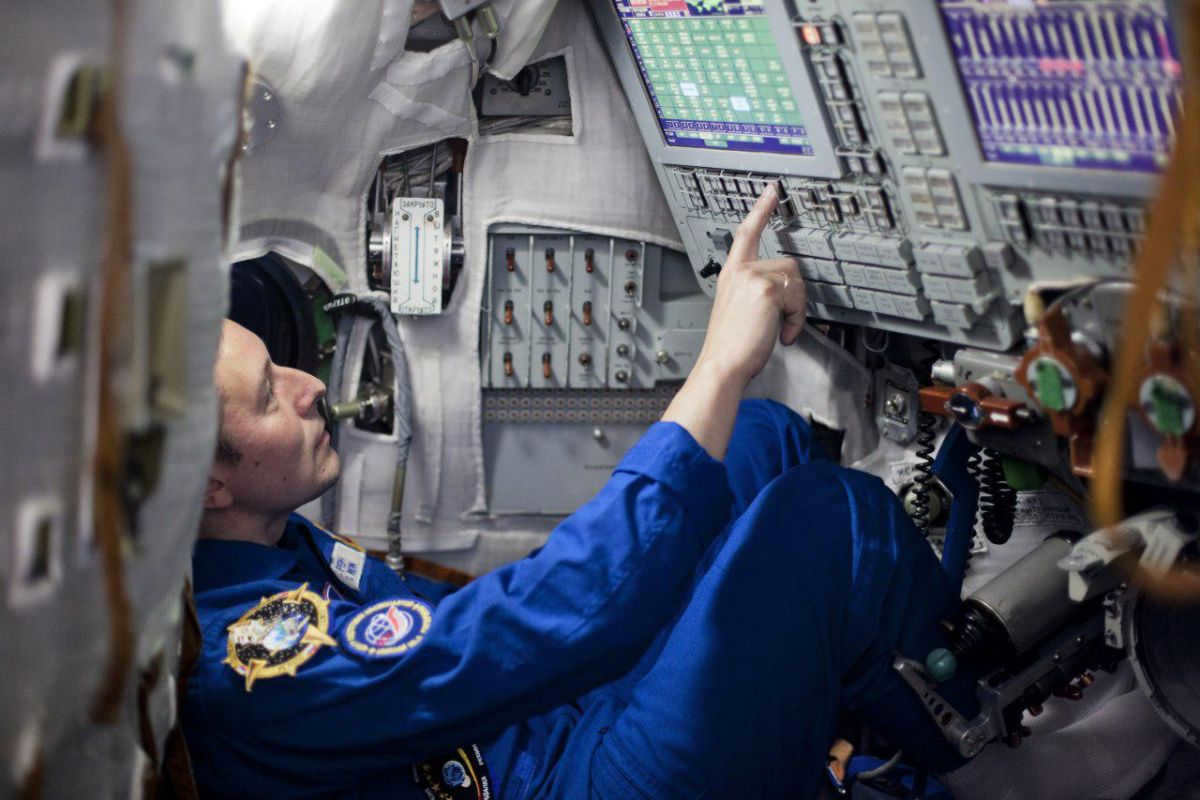
On the flip side, over the past few decades, the field of astronautics has experienced a shift towards a more civilian focus. This has opened up numerous opportunities for talented engineers and space technology developers, who play a crucial role in the advancement of space rockets and satellites. In fact, throughout the history of astronautics, more than 220 individuals with backgrounds in engineering, science, and programming have had the privilege of venturing into space. Additionally, skilled medical professionals are highly sought after in this industry, as they must possess a deep understanding of aerospace hardware. Once you have determined your desired career path and identified a suitable educational institution, you can proceed to the next phase of your training.
The primary qualifications for NASA (USA) astronauts:
– A minimum of a bachelor’s degree in one of four fields – engineering, biology, physics, computer science (or mathematics).
– A minimum of three years of experience in their respective field or 1,000 hours of flight time in a jet.
– Exceptional physical fitness, with the ability to endure and tolerate high levels of physical and mental stress.
– Normal vision, either unaided or with corrective lenses.
– Blood pressure within normal range, not exceeding 140/90, and a height between 157 and 190 cm is preferred.
– Additional qualifications include a propensity for leadership, strong teamwork skills, and effective public communication abilities.
It’s important to keep in mind that upon completing a military flight school, you will be required to serve a number of years in the Armed Forces, while civilian graduates will need to work as civil aviation pilots. Similarly, individuals who obtain an engineering degree, such as from “Baumanka,” will need to find employment in the aerospace industry. Those aspiring to become “space doctors” should specialize in the relevant field and consider working at an institute or aerospace/aviation medicine-related company, or directly with manned space missions. For those who have chosen a “non-flight” path, it would be beneficial to also pursue piloting courses and complete a few parachute jumps, as this will provide a valuable advantage in the future.
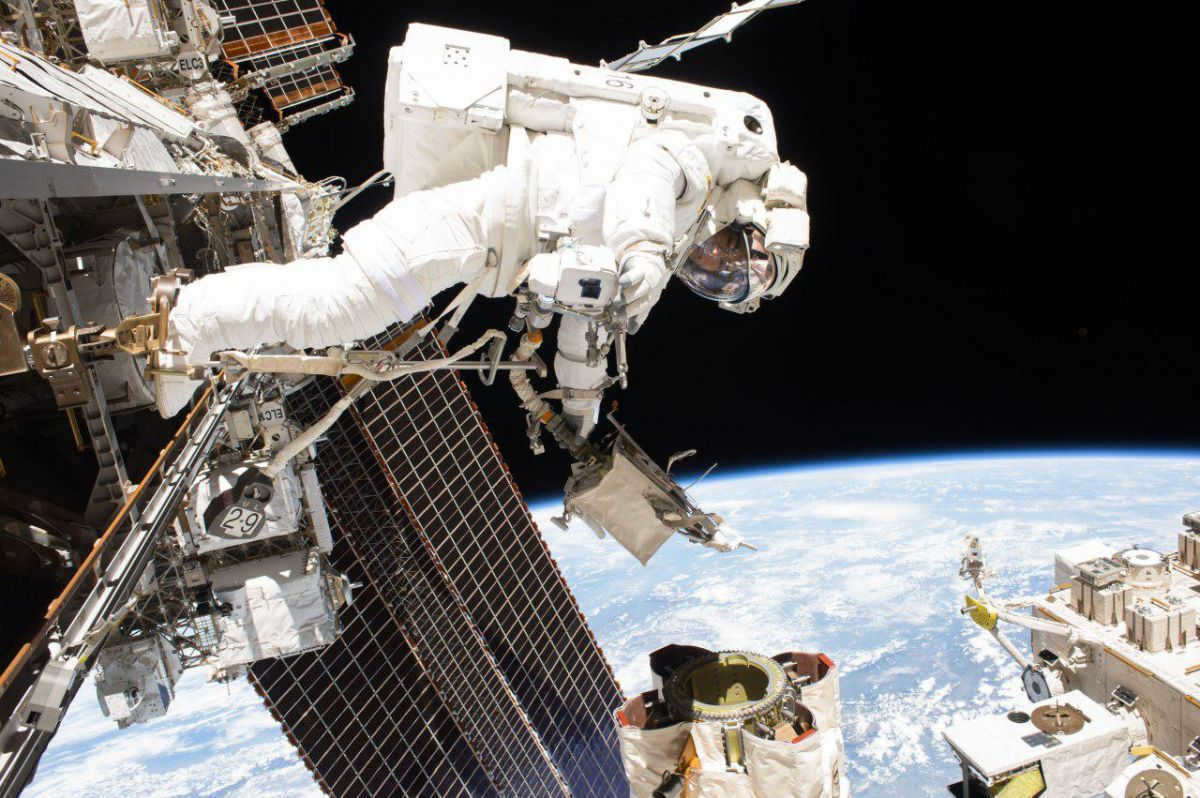
Qualifications
The initial qualifications for aspiring astronauts were established by Sergei Korolev: “optimal physical and mental health, as well as overall endurance; exceptional flight performance with strong determination, diligence, and curiosity; active aspiration to master space travel; anthropometric measurements: height not exceeding 170 cm, weight between 70-72 kg, age below 30 years”. It is important to note that during the Soviet era, astronauts were also required to be members of the Communist Party and possess an impeccable moral character. Nowadays, political affiliations are not a factor, and the size requirements have been significantly relaxed – modern spacecraft capsules offer much more spacious accommodations.
The minimum requirements for becoming an astronaut in the European Union and Canada (ESA) are as follows:
– A higher education degree in a relevant scientific or technical field, along with a strong background in research.
– While experience in piloting an aircraft is encouraged, it is not mandatory. Other skills and expertise will also be considered.
– Candidates must possess a high level of physical fitness, as well as psychological stability, adaptability, and self-control.
– Effective communication skills and willingness to engage with the public and media are essential aspects of an astronaut’s role.
– Proficiency in English is a requirement, and knowledge of Russian is considered advantageous.
– Only citizens of member countries of the European Space Agency, which includes most European nations and Canada as an associate member, are eligible to apply.
The requirements for the 18-29 age group are set at the GTO level. These requirements include running 1 km in 3 minutes and 35 seconds, as well as performing a minimum of 14 pull-ups. The evaluation of health and psychological condition is conducted through in-person tests, which take place in Star City, located near Moscow.

Countdown: choosing the right colleges and universities for aspiring astronauts
Career: aerospace engineer
Training institutions: Moscow Aviation Institute, Bauman Moscow State Technical University, specialized departments at Bauman, MIPT, MSU, SPbSU, NSU, or other prestigious universities and institutes in the country. It is highly recommended to gain work experience at leading aerospace companies such as RSC Energia, GKNPTs named after M.V. Lomonosov, Khrunichev, NPP Zvezda, NPO Energomash, Reshetnev ISS, Lavochkin NPO, etc., after completing university studies.
Career: pilot
Training centers: Ulyanovsk Institute of Civil Aviation (with branches in Sasovo and Krasny Kut), St. Petersburg State University of Civil Aviation (with a branch in Buguruslan), Omsk Civil Aviation Flying and Technical College, Kaluga Aviation Flying and Technical School of the Central Committee of DOSAAF, Higher Military Aviation Schools of pilots and training centers of the Air Force (in Syzran, Barnaul, Krasnodar, Voronezh, Armavir, etc.).
Occupation: physician
Training facilities: any medical school specializing in a relevant field. It is also preferable to have practical experience in the medical profession, as well as collaborate and work within a medical institution closely related to the field of astronautics, such as the Institute of Medical and Biological Problems (IMBP) RAS, Institute of Space Research (ISR) RAS, or Federal Medical and Biological Agency (FMBA) of Russia. Additionally, individuals will be required to undergo extensive supplementary training in engineering, technology, and piloting.
By the way, there are general selection criteria for cosmonauts (and tourists) who visit the ISS. These criteria were agreed upon by the countries participating in the project in 2002. In addition to medical and professional qualifications, personal records of candidates are also taken into consideration. If a person has committed a crime or provided false information about themselves, has a history of bad behavior, is prone to excessive drinking, or uses drugs, they will not be allowed to fly.
The Interpol checks the questionnaire, and candidates who are citizens of countries not participating in the ISS project require the consent of all 15 participating countries. All candidates must have a confident knowledge of English, and often additional knowledge of Russian is required when flying on Russian spacecraft.
Currently, there are 27 members in the Russian cosmonaut team, and every few years, Roscosmos announces the opportunity for new recruits. The most recent recruitment drive took place in 2012, while the latest one started on March 14, 2017 and concluded in September of the same year. This selection process was open to all Russian citizens who met the basic criteria, regardless of their background in aviation or the aerospace industry.
We have already cited the official announcement from the Cosmonaut Training Center (CTC), which highlighted the primary requirements for applicants. In addition to these requirements, the announcement also emphasized the importance of computer literacy, proficiency in English, and a strong aptitude for learning the technical and physical aspects of space technology.
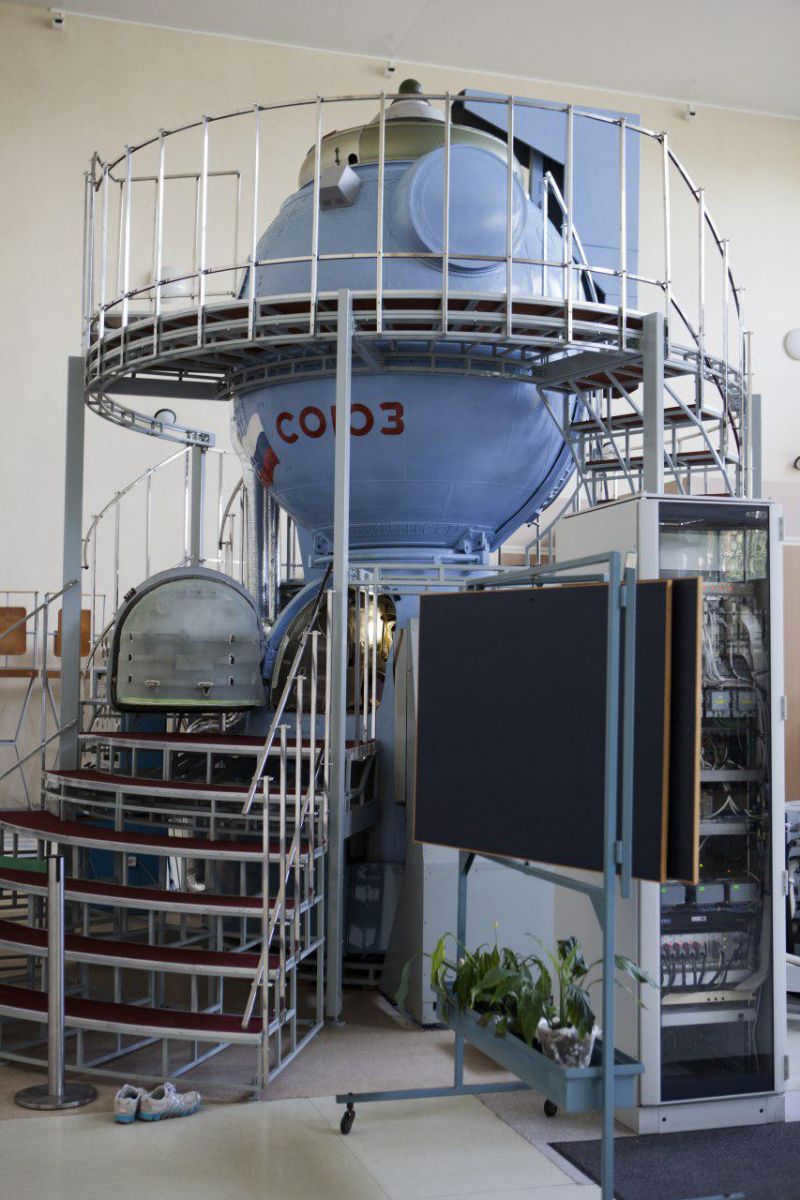
The head of the FGBU “Research Institute of the CPC named after Yuri Gagarin” in Star City, Moscow region, has received numerous applications labeled “In the commission for the selection of candidates for astronauts.” However, only 6-8 individuals will be chosen to join the Russian team. If your application is not accepted, there is no need to lose hope. Despite the challenges and setbacks faced by the Russian space industry in recent years, the profession of a cosmonaut remains highly esteemed and in demand worldwide. As a result, the number of applications for selection exceeds the required quota, and not everyone, particularly on their first attempt, successfully passes the selection process.
If you were not selected due to a simple lack of a minor requirement rather than medical or other strict limitations, you have the opportunity to reapply. In his autobiography, retired astronaut Clay Anderson revealed that he submitted his application to NASA on 15 separate occasions before finally being accepted into their training program.
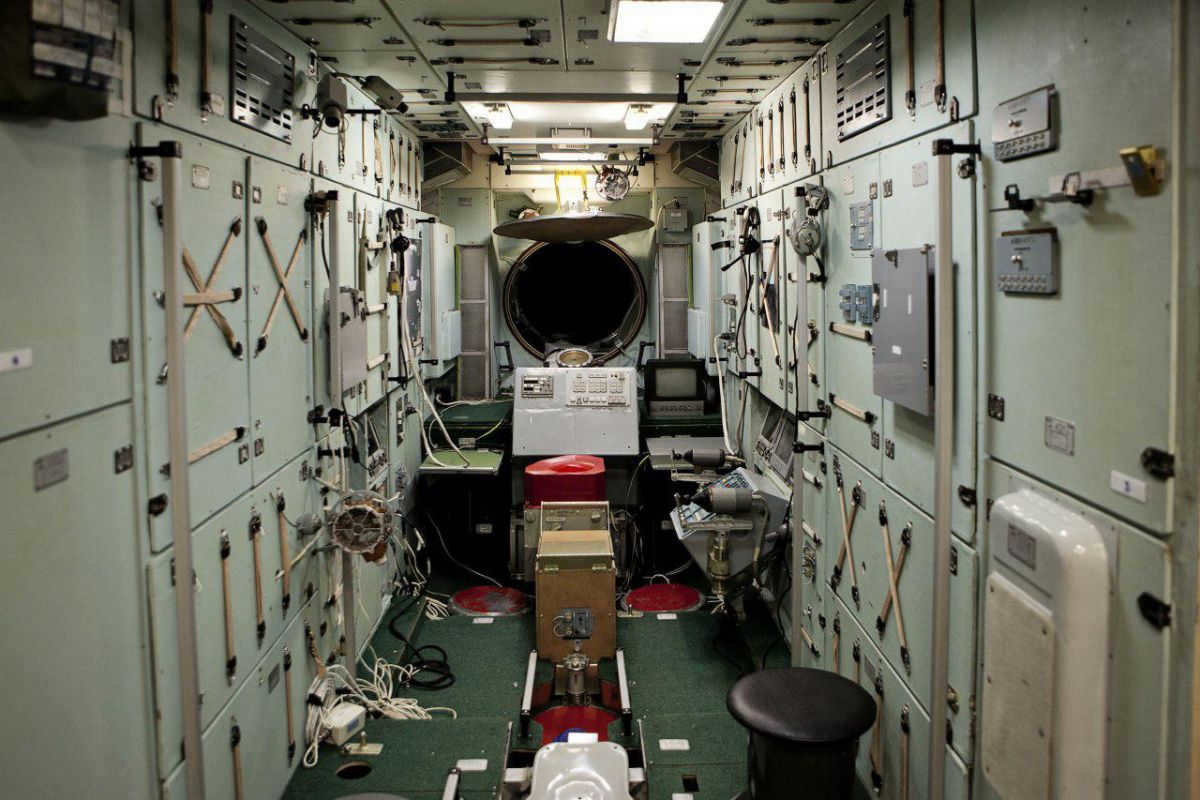
By the end of the year, candidates will be chosen and invited to undergo psychological interviews, physical tests, and medical examinations at the CPC. Some of the assessments include rigorous simulators, barochambers, centrifuges, and even a challenging personal interview. The interdepartmental commission that selects candidates consists of five separate commissions: one for medical examinations, one for physical fitness and psychological requirements, one for education and professional competence, and one for processing applications and documents. The ability to quickly comprehend complex and extensive technical material is also evaluated.
Nevertheless, reaching the peak of this journey, which is being accepted into the recruitment process, is only the subsequent step, and numerous applicants are eliminated at a later stage, during the demanding and sometimes monotonous two-year training program consisting of monthly sessions. Our training system, derived from the Soviet pioneers of astronautics, is widely acknowledged as one of the most rigorous in the world. However, the hard work pays off, as one day, with a heart filled with joy, you will receive the coveted “crust” of a certified astronaut, eagerly anticipating the crew training. Eventually, as a composed and knowledgeable professional, you will step aboard a spaceship and wave goodbye with confidence.
The G. S. Titov Youth Club of Cosmonautics
Location: St. Petersburg, Russia
Address: Servizny building, 1st floor, room 110, Nevsky pr., 39, St. Petersburg City Palace of Youth Creativity
Contact: +7 (812) 407-43-55
Programs: The G. S. Titov Youth Club of Cosmonautics is one of the oldest children’s cosmonautics clubs in Russia, established in 1961. It offers a three-year educational program covering various aspects of aerospace and information technologies, astronomy, and aviation. The club has produced several active cosmonauts. The classes are free of charge.
Website: april12.org
Astro Space Center “Attraction”
City: Nizhny Novgorod.
Contacts: ul. 20, Revolutsionnaya Street, Nizhny Novgorod Planetarium named after G. M. Grechko. G. M. Grechko.
Phone: +7 (831) 272-50-94.
Classes: Theoretical and practical aspects of astronomy, fundamentals of astronautics. Guided tours at the planetarium and telescope observations, space simulator training, starship simulator tests, meetings with industry experts. Free of charge.
Website: planetarium-nn.ru/action-attraction-2/.
“Space Detachment” Space Enthusiasts Club.
City: Moscow.
Address: 111 Mira Avenue. Museum of Cosmonautics.
Contact: +7 (916) 402-28-54.
Classes: Lectures on space technology, astronomy, basic flight preparation, meetings with astronauts and scientists, trips to observatories and aerospace centers, interactive classroom, astronomical observations. Each lesson costs 200 rubles. The museum also runs KB “Vostok” – a school for young space technology designers.
Website: www.kosmo-museum.ru
“Cosmokvantum” program of the “Quantorium” network of children’s technoparks
Cities: Barnaul, Vladimir, Nalchik, Nizhnekamsk, Tomsk, Tula, Kosmosmolsk-on-Amur, Nefteyugansk, and more.
Addresses: There are over 20 centers located throughout the country.
E-mail: [email protected].
Classes: Our classes cover a range of topics including manned cosmonautics, the basics of astronomy, space mechanics and programming, as well as space and aircraft development. We use spacecraft simulators and microsatellite designers, as well as data reception complexes from orbit. Our classes are paid.
Website: Visit us at roskvantorium.ru
Many people have had the dream of traveling into space since childhood. This dream can become a reality by pursuing a career as an astronaut. However, becoming an astronaut is not an easy profession, as it requires excellent health. This can be achieved through attending an aviation university or secondary school.
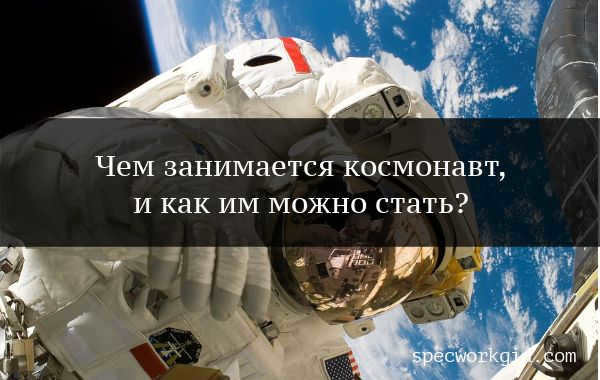
What is the profession of an astronaut all about?
An astronaut is an individual who operates and controls space equipment during missions, conducts various experiments, and carries out scientific research in outer space.
This occupation is relatively new, with the field of cosmonautics emerging in recent history and space travel becoming a reality only later on. The science of exploring space beyond Earth originated in Russia during the late 19th and early 20th centuries. Konstantin Tsiolkovsky is credited as its founding figure, as he was one of the initial scientists to provide scientific evidence for the possibility of space flight. However, Tsiolkovsky’s concepts were not put into practice until 1961, when Soviet scientists successfully launched a spacecraft carrying Yuri Gagarin into Earth’s orbit.
Tasks and responsibilities
The responsibilities of the profession representative include:
- Operating manned and unmanned spacecraft;
- Performing scientific research, including various experiments, while aboard the space station;
- Conducting research in outer space;
- Taking measures to address any malfunctions that may occur on the spacecraft or station;
- Undergoing regular medical examinations to assess fitness for space travel;
- Participating in specialized training programs to enhance skills and knowledge.
An astronaut is a highly lucrative occupation. On Earth, a representative of this profession earns between 300,000 and 400,000 rubles per month, while for a month spent aboard an orbital station, their salary can reach 1,000,000 rubles.
Since all astronauts in the Russian Federation are members of the military, their career progression is tied to advancement in the military hierarchy. As a cosmonaut receives a higher military rank and position, their income also increases significantly. Additionally, there are opportunities for professional growth in the scientific field, such as engaging in research, teaching, and writing scientific papers.
However, finding a job as an astronaut can be challenging due to several reasons:
- Astronauts are a rare breed;
- There is limited turnover within the profession;
- The selection process for candidates regarding their health is very strict.
Advantages and disadvantages of the profession
Here are the main advantages of this specialty:
- Attractive salary;
- Engaging work;
- Opportunity for early retirement;
- Extensive benefits provided by the government;
- Potential for career advancement.
And here are the disadvantages of this profession:
- Work involves risks to personal safety;
- Professional activities can be detrimental to health;
- Frequent and lengthy business trips;
- Limited job opportunities;
- Difficulty in finding employment due to strict requirements.
How can one pursue a career as an astronaut?
What qualifications and skills are necessary?
These are the qualifications and skills that an individual aspiring to be an astronaut must possess.
- Excellent physical health. This is undoubtedly the most crucial requirement for someone in this field. During the launch, the spacecraft must overcome the force of gravity, which puts immense strain on the astronauts’ bodies. Individuals who are not resilient enough can suffer from cardiac arrest, respiratory problems, or even ruptured blood vessels.
- Proficiency in aviation and space technology. In certain situations, professionals may need to troubleshoot issues on the spacecraft, space station, or while wearing a spacesuit. This necessitates a solid understanding of the fundamentals of this technology.
- Responsibility. The health and life of other crew members, as well as others, depend on the actions of a specialist. Moreover, the astronaut himself is also at risk. It is crucial for the specialist to keep this in mind and approach each action with great responsibility.
- Preparedness for extended work assignments. A specialist must be prepared for lengthy work assignments on the space station, which can last up to six months.
What qualifications are necessary and how can I apply?
Astronauts are selected from graduates of aviation universities, both military and civilian. However, individuals who have completed secondary school can also pursue a career in this field, provided they have good health and the necessary skills.
What are the requirements for admission?
Here are the requirements for university admission:
If the applicant is applying to a military educational institution, they will also need to meet physical fitness standards.
For secondary school admission, the following must be fulfilled:
When entering after the eleventh grade, studying in a specialized secondary school, which includes aviation and astronautics specialties, takes approximately two years and ten months. If entering after the ninth grade, the duration of study is extended to about three years and ten months.
Can distance learning be an option?
Unfortunately, it is not feasible to pursue a profession in aviation and astronautics through online courses. However, there is a possibility to enroll in the correspondence department of an aviation university or specialized secondary school. It’s important to note that military universities do not offer a correspondence department.
Where can you pursue a degree in astronautics?
Top universities and academies
Here are five prestigious higher education institutions in Moscow that offer programs in astronautics.
- Moscow Aviation Institute. The tuition fee for a one-year program at this university is 61,500 rubles.
- Moscow State Technical University named after N. E. Bauman. The annual tuition cost here amounts to 266,884 rubles.
- Moscow State Technical University of Civil Aviation. To pursue a year of training at this institution, the fee is 55,000 rubles.
- Balashikha Higher Military Aviation School. There is no tuition fee for studying at this university.
- MATI named after K. Tsiolkovsky. The tuition fee for one year of education is 215,000 rubles.
These are five universities in the northern capital that are similar in some ways.
- St. Petersburg State University of Civil Aviation. The cost for a one-year program at this university is 71,900 rubles.
- A. F. Mozhaisky Military Engineering and Space University. Education at this university is completely free of charge.
- Military Engineering University. They provide education on a tuition-free basis.
- Military Academy of Communications named after Marshal of the Soviet Union S. M. Budyonny. There is no fee for studying here.
- Military Medical Academy named after S. M. Kirov. Training in this educational institution does not require payment.
Because all of the aforementioned universities receive funding from the state budget, students have the option to study for free in addition to paid programs. However, there is a limited number of spots available for free education, so if an applicant does not get accepted into one of these spots, they will have to pay for their studies. This exception does not apply to military universities, which are also included in the list, as their education is completely free. In fact, cadets in military universities receive a generous stipend ranging from 15,000 to 25,000 rubles.
The duration of study in the listed educational institutions is four years for bachelor’s programs and six years for master’s programs. The military universities are an exception to this rule, as their training extends to five years. Upon completion of their studies, graduates from military universities receive the qualification of “specialist”.
Higher education institutions and vocational schools
Here are five specialized secondary educational institutions in Moscow and the Moscow suburbs that offer training programs that can lead to a career as an astronaut.
- Dolgoprudny Aviation Technical School. The tuition fee for a one-year program at this technical school is 96,000 rubles.
- Moscow Aviation Evening Technical School. The cost of one year of training at this institution is 58,000 rubles.
- Zhukovsky Aviation Technical School, named after V. A. Kazakov. The tuition fee for one year of study here is 74,000 rubles.
- Moscow Aviation Technical School, named after N. N. Godovikov. The tuition fee for two semesters of study here is 42,000 rubles.
- The Moscow College of Aviation Engine Building. The tuition fee for one year of study at this vocational school is 56,000 rubles.
And here is a list of five similar vocational schools in St. Petersburg.
- The Aviation and Transportation College. The cost of training is 84,000 rubles per year.
- The College of the University of Aerospace Instrumentation. To complete the twelve-month program at this vocational school, it will be necessary to pay 76,000 rubles.
- The Leningrad Machine-Building College named after J. Y. Kotin. The tuition fee for one year of study is 38,000 rubles.
- The St. Petersburg Mechanical and Instrument-Making College. To study here for one year, it is necessary to pay 50,000 rubles.
All of the colleges listed above are publicly funded, offering tuition-free education. However, the number of available spots is limited, so it is crucial to secure admission in a timely manner.
The duration of the program is two years and ten months for students entering after the eleventh grade, and three years and ten months for those entering after the ninth grade.
Courses and Training Programs
Below are some introductory courses in Moscow that cover the fundamentals of cosmonautics.
- Gagarin Cosmonaut Training Center: This center offers free seminars that last for two weeks.
- Fundamentals of Cosmonautics Courses: These courses have a duration of two days and cost 4,000.
- Courses at the Museum of Cosmonautics: You can attend these courses for free, and they last for three days.
- MNEPU Academy on Voykovskaya Street: The cost of these courses is 12,000, and they have a duration of three weeks.
- RSC Energia Courses: These courses are free of charge and have a duration of three months.
Similar programs are also available in St. Petersburg.
- “Your Sector of Space” Courses: These courses have a duration of one week and cost 6,000.
- SpaceRoad courses. The price is 10,000, and the duration is four weeks.
- Courses at St. Petersburg State University. The cost is 40,000, and it takes six months to complete.
- The Village courses. It costs 8,000, and the duration is one month.
- Youth School of High Technologies “GUAP”. The price is 20,000, and it lasts for four months.
It is worth mentioning that while all the courses mentioned above provide an introduction to astronautics, they do not offer professional qualifications. The only exception is the courses offered by SPbSU, which allow students to fully specialize in the field. Upon successful completion of the SPbSU program, students are awarded an official certificate. This distinction arises from the challenges inherent in the profession, as not all course providers are able to deliver the required level of training, particularly if they are privately run.
The profession of a cosmonaut is both intriguing and perilous. Those who choose this path can reap substantial financial rewards, enjoy state benefits, and retire early. To qualify, one must complete studies at an aviation university. However, it is also possible to become an astronaut after graduating from secondary school. Yet, these courses only provide a basic understanding of the profession and do not offer the opportunity for specialization. Aspiring astronauts should be aware that finding employment in this field can be challenging as there is limited demand for astronauts, and candidates must meet rigorous health requirements.
An interview was conducted with a Russian astronaut who successfully joined the Roskomos squadron following a rigorous 1.5-year selection process. Konstantin Borisov, 34, spoke to “Sobaka.ru” about the criteria for becoming a cosmonaut and why fulfilling one’s childhood dream is not as challenging as it may seem.
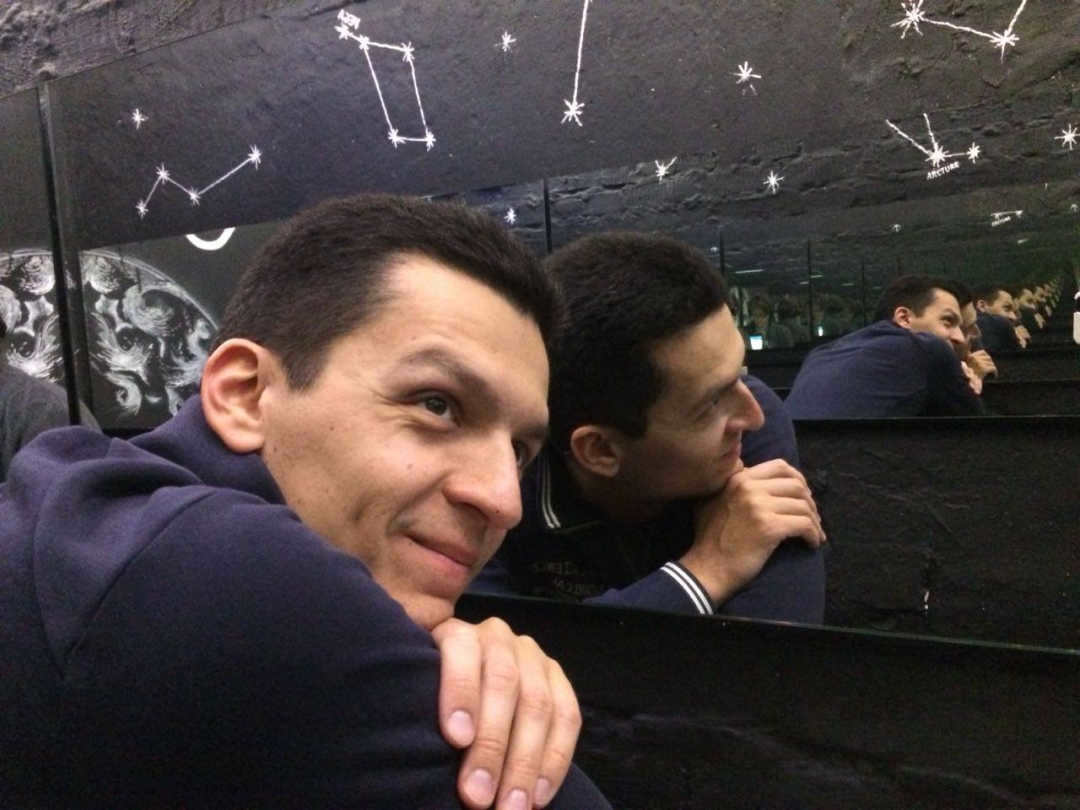
Konstantin Borisov, photo: “VKontakte”
Is it possible for anyone to become an astronaut?
What led me to the aspiration of becoming an astronaut? Since my childhood, I had always dreamt of being a test pilot, but unfortunately, it never materialized. However, in 2012, while I was seated in my office, working on financial models, I suddenly came across the news that Roscosmos had commenced its selection process. I thoroughly researched the profiles of those who had successfully passed the selection in the past: their educational backgrounds, photographs, work experiences, and even their facial expressions. It dawned on me that they were just ordinary individuals, much like myself.
Back in 2013, the Cosmonaut Training Center (CTC) website revealed some interesting statistics regarding the number of applications received. Surprisingly, out of a population of 140 million, only 304 individuals submitted their applications. With such a small pool of applicants, it might seem like your odds of being selected are merely 2%. However, the reality is that the chances are actually much higher, standing at a solid 20%.
Roscosmos has specific requirements outlined in their manuals and regulations for the type of candidates they are seeking. If you meet the criteria in terms of age, work experience, education, and having good health, this will already enhance your likelihood of success. The initial stage involves a thorough screening process where individuals who apply at the age of 38 or older may be considered borderline and not prepared for further consideration. Additionally, some applicants in 2012 submitted incomplete document packages, totaling 84 cases. The task of gathering all the required paperwork serves as a test of motivation and patience.
If you have prepared yourself, checked your health, meticulously gathered a package of documents, and meet the age and other formal prerequisites, then in 2012, you would have already found yourself among the fortunate 50 individuals who were granted an invitation to the in-person phase. Regrettably, nine of them declined the offer – thus, resulting in only 41 candidates vying for the available eight spots.
If you do not satisfy the requirements, and you are currently 15, 20, or 25 years old, there is still hope for you to catch up. You can pursue education, acquire the necessary experience, or improve your health – such instances are quite common, with every second applicant for astronauts undergoing some form of medical procedure prior to the recruitment process.
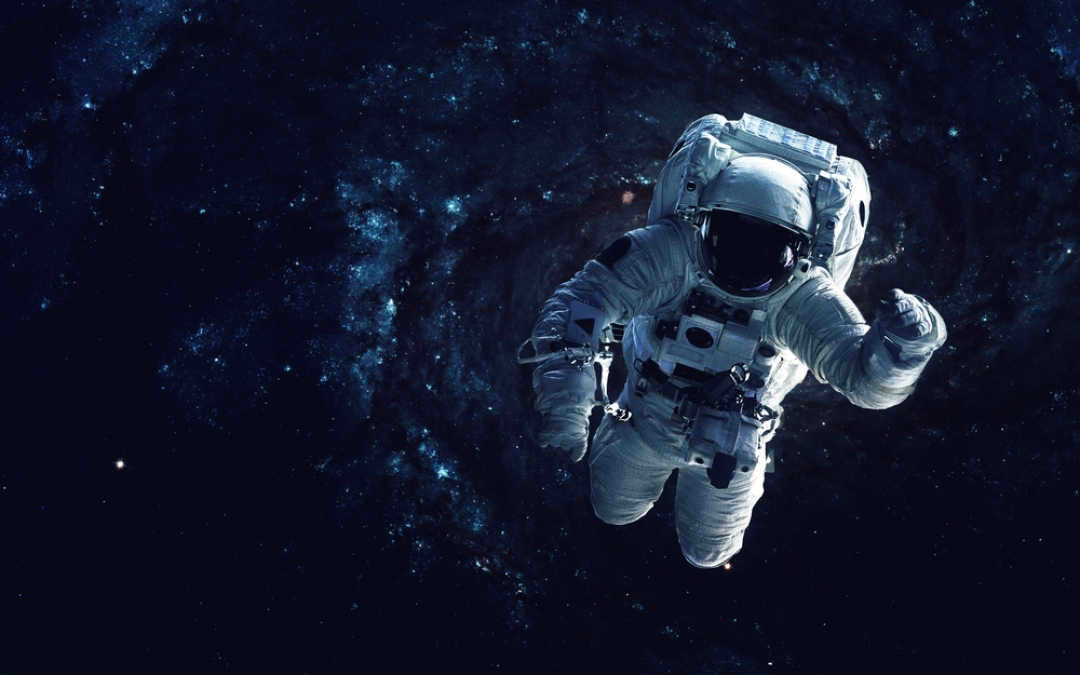
Preparation
In September 2015, I began taking steps to prepare for the upcoming recruitment process by prioritizing my health. Over the course of a couple of months, I diligently sought out various doctors and requested that they conduct thorough examinations.
In order to gain insights and advice, I reached out to individuals who had been selected in 2012 through various means such as Facebook, VKontakte, email, and phone calls. Surprisingly, only one person responded, but their willingness to engage in a two-hour conversation left a strong impression on me. This interaction solidified my belief that their sincerity warranted giving the recruitment process a chance.
The most valuable advice I received from current astronauts, which I am extremely grateful for, is the importance of incorporating running and biking into your routine. Initially, I wasn’t particularly fond of these activities, but I pushed myself to do them and dedicated 2-3 hours per week. This approach played a crucial role in my success during the test, where many individuals dropped out due to the measurement of their heart rate before and after physical exertion. To increase your chances of qualifying for the 2020 event, it is crucial to commence training as early as possible. It took me two years to prepare, so if you aspire to participate, it is imperative to begin now.
To meet the eligibility criteria, you will need to gather a total of 56 documents, primarily medical records, but there are other requirements, such as providing proof of a clean criminal record. It would be advisable to allocate some vacation time to complete this task.
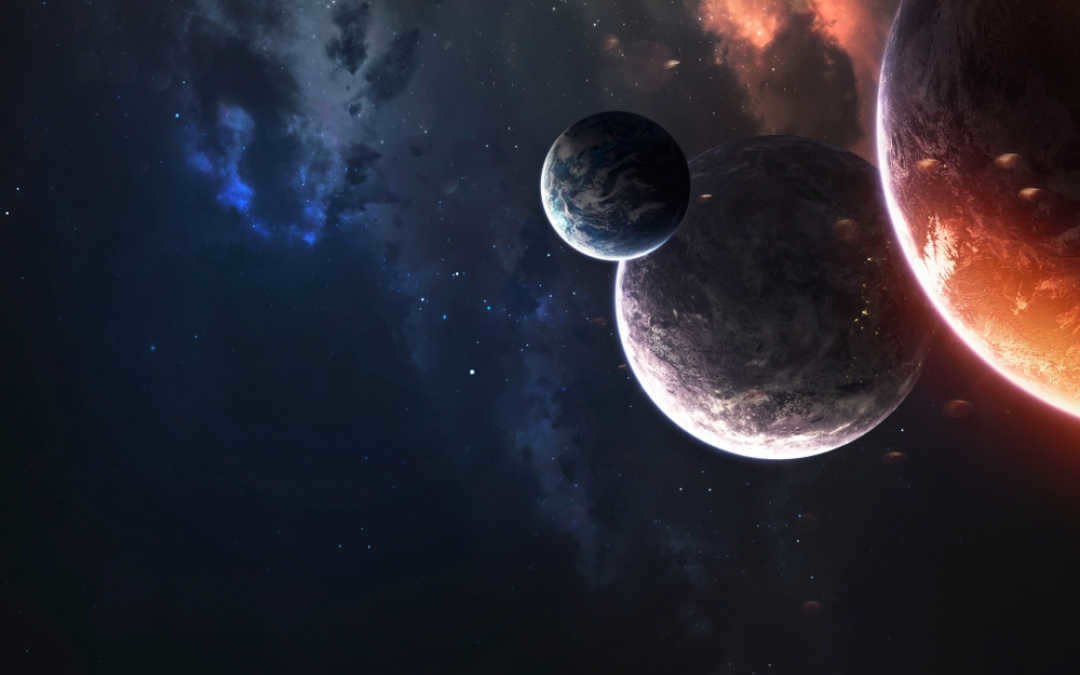
An Optimal Candidate
An optimal candidate would be someone who is around 30 years old, possesses strong writing skills in Russian, is fluent in English, and has a background in the aerospace industry. Additionally, they should have a track record of academic excellence and regularly engage in sports activities that promote strength, endurance, and agility. To be honest, I am not sure if such individuals exist as I have not come across them. However, it is crucial to acknowledge one’s weaknesses and make attempts to improve them.
Advice
If your dream is to become an astronaut, it is crucial to set a clear goal and commit to continuous self-improvement. Break down the task into manageable stages and persevere, even when faced with challenges. I personally experienced the difficulties of waking up early at 7 a.m. and attending lectures, as well as seeking guidance from a physics tutor. These tasks can be especially demanding when you are no longer a child, and others may not understand your motivations. However, it is important to remain resilient and not let setbacks discourage you. Remember that having fewer opportunities than others does not mean you have no chance at all. Stay determined and keep pushing forward. I have heard of cases where individuals were initially rejected, but they wrote a letter of reconsideration, expressing their unwavering persistence. As a result, their determination was admired and the decision was ultimately changed.
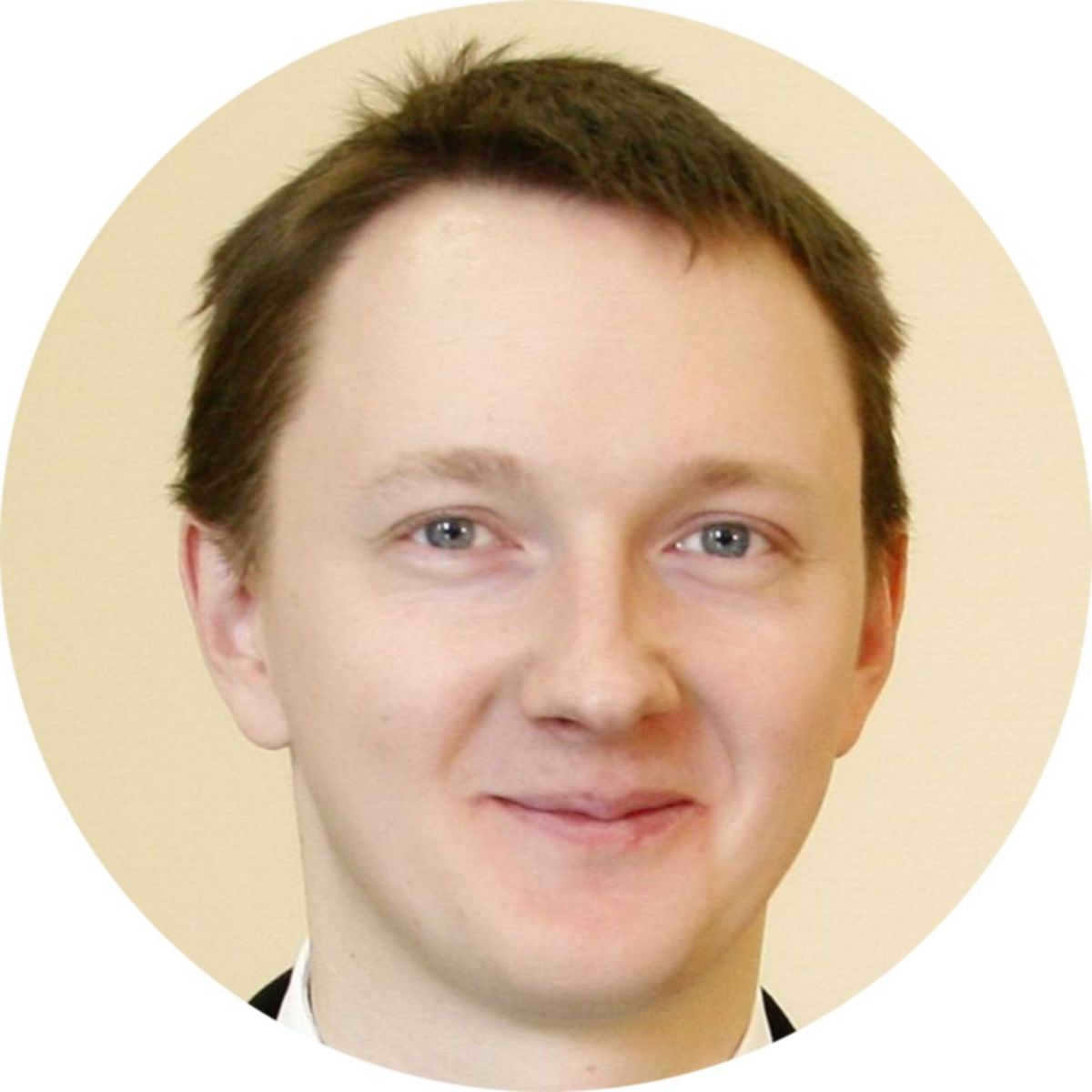
The Return to the Moon: A Big Breakthrough
Key Points to Consider
Psychologists were curious to know who is currently on board the International Space Station (ISS). Surprisingly, half of the participants were unable to answer this question. Interestingly, this information was prominently displayed on a poster at the entrance of the astronaut training center. Following this, other questions about the modern space exploration were asked, serving as a gauge to determine whether individuals were genuinely interested in the industry or just curious observers.
What are the recommended books for a future astronaut?
1. “Rockets and people” by Chertok B.E.
This comprehensive four-volume book chronicles the development of the global rocket industry from the 1940s to the 1990s.
2. “Hidden Space” by N.P. Kamanin.
Nikolai Petrovich Kamanin, who was responsible for the initial selection of cosmonauts, documented his experiences in his diaries, which have now been declassified. These diaries provide insights into the reasons behind the selection of individuals like Yuri Gagarin.
3. Encyclopedias – both international and domestic editions on cosmonautics.
These encyclopedias serve as comprehensive references, containing answers to questions that may be asked during the selection process, such as “What American manned programs are you familiar with?” or “What are the differences between the Falcon and Orlan spacesuits?”
4. “Become a cosmonaut!” by Zhukov SA.
The book “100 stories about docking” by V.S. Syromyatnikov was co-authored by Sergey Ryazansky. It details their entire journey from 2003 to 2005, which they described after successfully going through the selection process. These memoirs are specifically aimed at engineers, providing insights into life and work in the field of cosmonautics.
To stay updated with the latest news, I recommend visiting the CPC and Roscosmos websites, checking out the online encyclopedia Astronaut.ru, participating in the Cosmonautics News forum, and reading the Cosmonautics News magazine. These sources will keep you informed about the current happenings in the field.
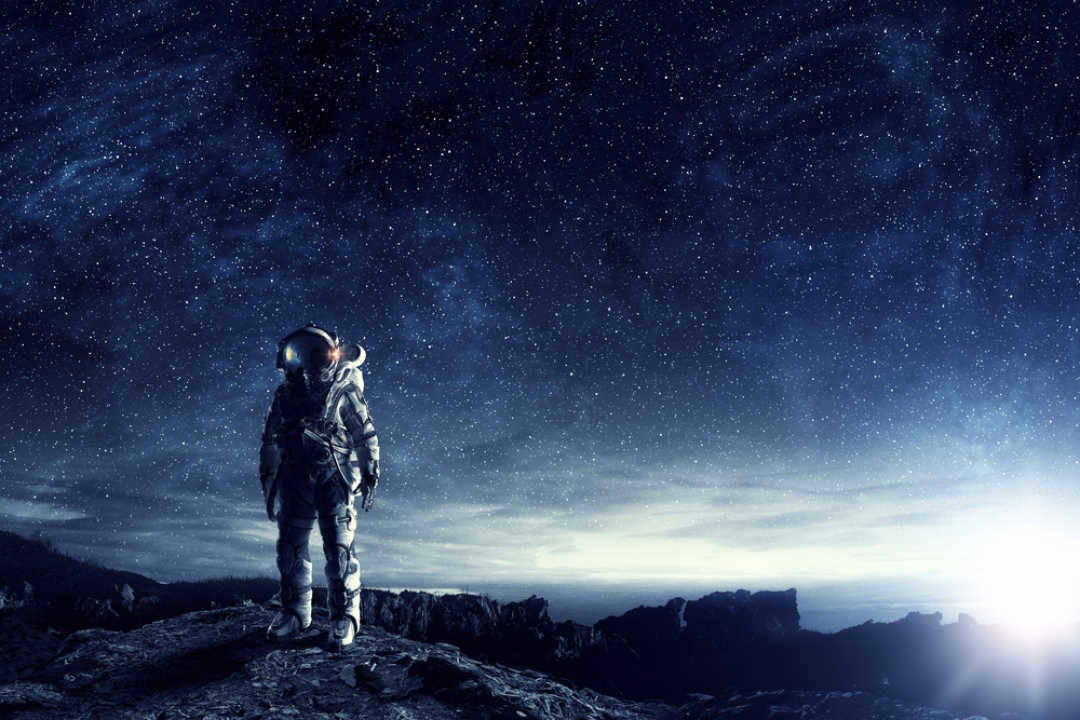
Selection Process
A total of 420 individuals participated in our comprehensive selection process. The process was quite lengthy, beginning in March 2017 with the start of the application period. I personally rushed to submit my application in June, only to find out that the deadline had been extended multiple times due to a lack of submissions. Eventually, the application period was officially closed in December. At that point, those who had submitted incomplete packages were contacted and requested to provide the missing documents. In the end, only 104 individuals were selected to advance to the full-time stage of the selection process.
It was surprising to me that psychologists were able to screen out 60-70% of applicants. There are a few reasons for this. The first reason is a lack of motivation. The second reason is a low level of higher nervous activity. Specialists assess various factors such as memory, reaction time, coordination, spatial awareness, and ability to quickly perform calculations. Individuals with low learning abilities are immediately excluded from the program.
The in-person stage of the selection process lasts for 3-8 weeks. Those who come from distant locations, such as Vladivostok or Murmansk, tend to complete it faster compared to others. This is because they often plan ahead, take vacations, and purchase tickets in advance. For the rest of us, the selection process may take longer.
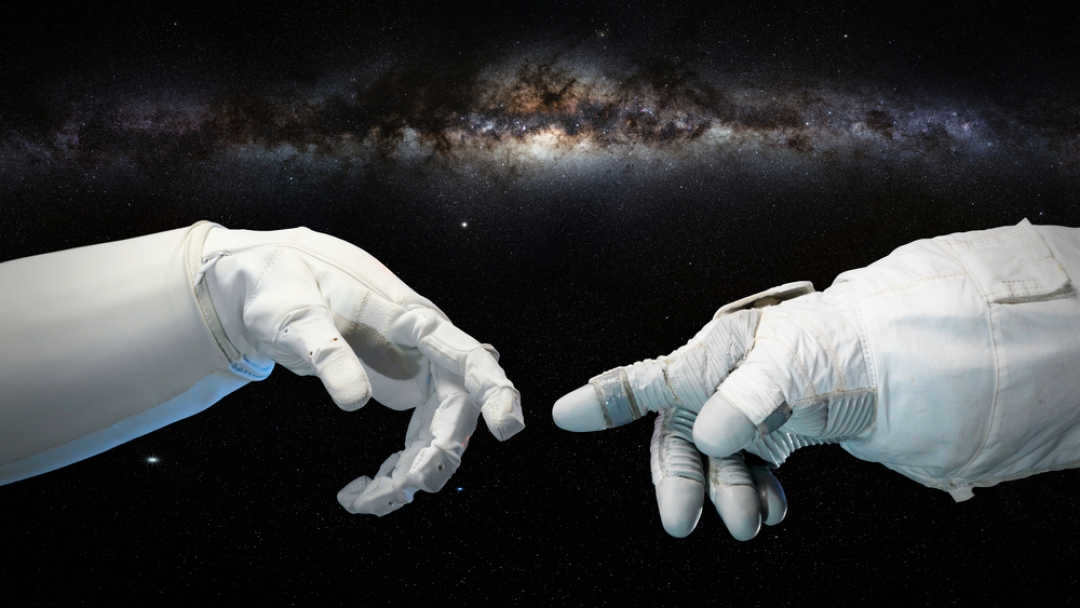
Important Information for Accepted Candidates
During my conversations with experienced astronauts, I inquired about the key skills required for this profession. They advised me: “Maintain good health, excel in your studies, and be patient. You must understand that your personal aspirations align with a national objective. Everyone is highly motivated to embark on their first, second, or third space mission; they eagerly await their assignment. However, before anything else, you need to demonstrate to yourself and others that you are capable, and then simply wait.
Astronauts are selected with a reserve: a squadron consists of 25 individuals, with seven serving as backups in case of illness, resignation, or retirement. The squadron is a dynamic entity that constantly welcomes new members. According to statistics, one person leaves the team each year.
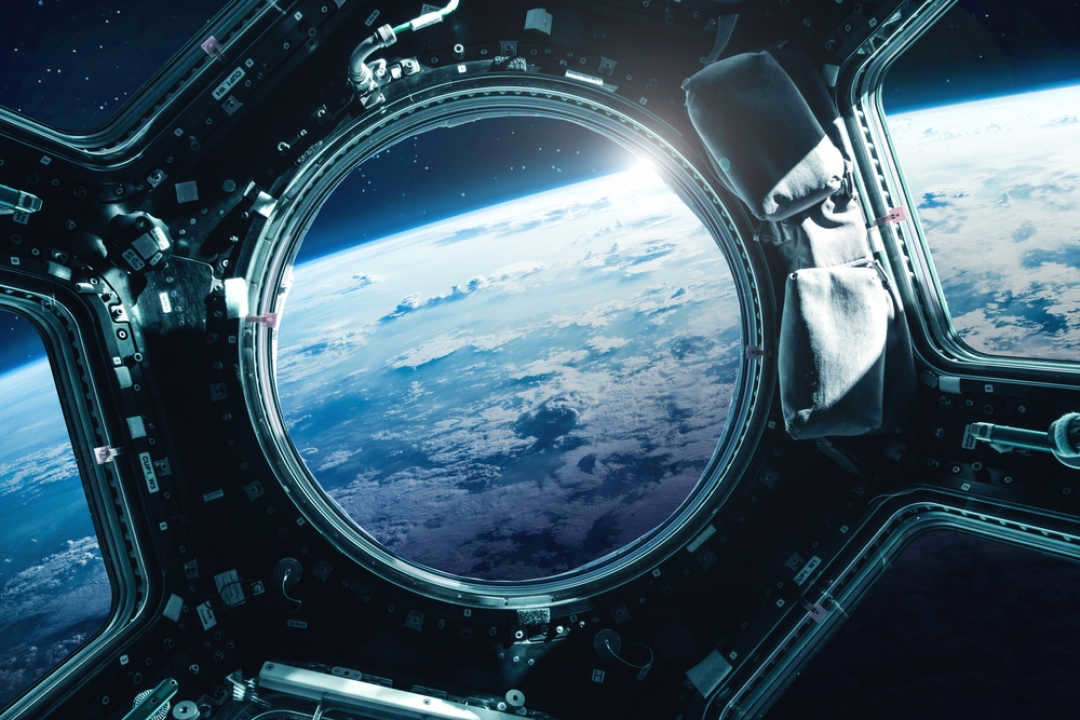
What types of astronauts are there?
I receive congratulations from everyone: “Hurray, you are an astronaut,” but this is not entirely accurate. Currently, I am a candidate for astronaut. There are four distinct statuses:
1. Test Astronaut Candidate
This title sounds very serious, almost like being an assistant to the assistant cleaning manager. This refers to an individual who has submitted their documents to participate in the selection process at the Cosmonaut Training Center (CTC). You fill out an application, gather a package of documents, and send it off – that’s it, you become an applicant. That’s what we were referred to as: “Dear applicants”.
2. Candidate for test cosmonauts
These individuals have successfully completed all the necessary examinations and are eligible to join the crew. They are technically considered test cosmonauts, including those who have already completed space missions, those who are scheduled for future missions, and even those who will never have the opportunity to launch into space.
In Russia, this title is an honorary distinction bestowed upon individuals along with a badge and a special certificate. It is important to note that receiving this title does not remove one’s status as a test cosmonaut. Once an individual has completed a spaceflight, they are then classified as third, second, or first class based on the complexity of the mission they undertook and the number of flights they have completed.
Recorded by Alexandra Leontieva
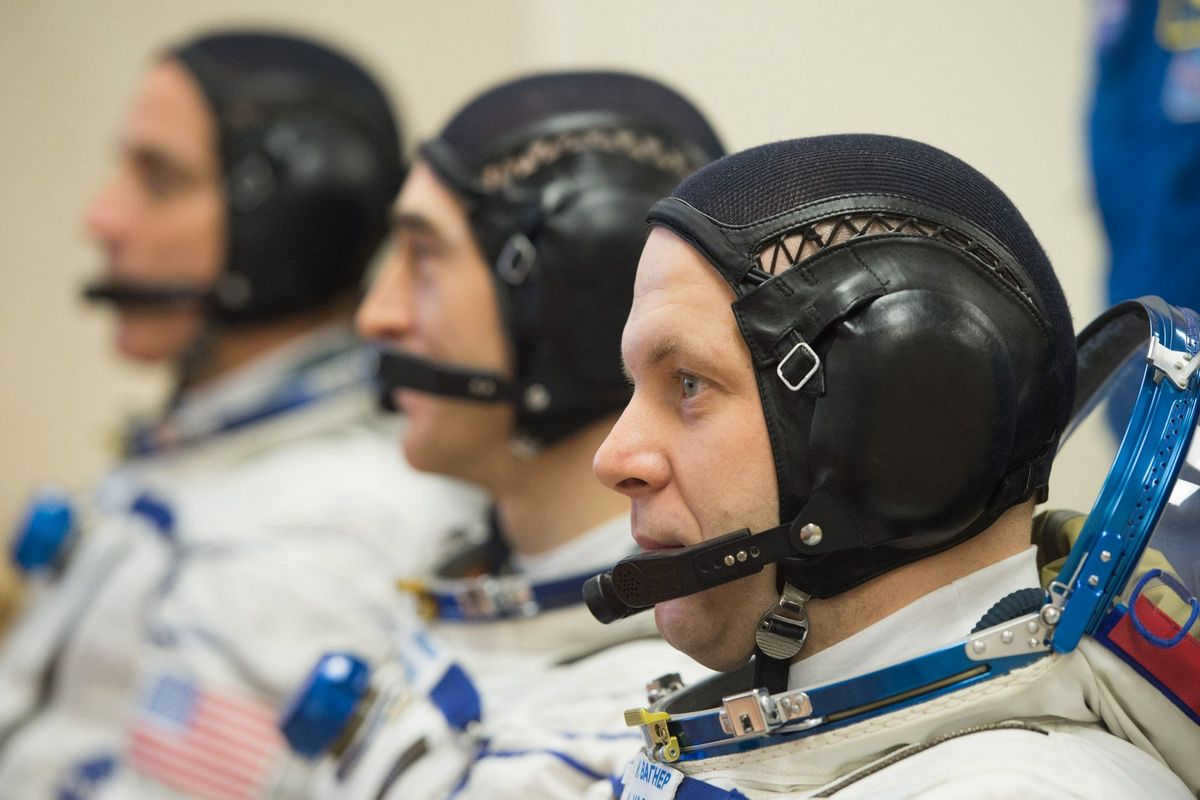
Experience the Adventure of Space Travel
The ongoing ISS-63 expedition is set to last for 196 days. From now until October, the crew will be dedicated to conducting research and experiments, performing various tasks on the ISS, transporting cargo, and welcoming and bidding farewell to fellow astronauts. In order to ensure the seamless continuation of Russia’s space mission, Roscosmos regularly recruits new members to its astronaut team.
And you still have a chance to follow in the footsteps of those venturing into space by submitting an application to participate in the current selection process. The selection for the squadron has been open for almost a year and will continue until June 1, 2020. Only four fortunate candidates will be chosen from all the applicants to join the esteemed Roscosmos team. To be eligible for the competition, applicants must meet a series of requirements.
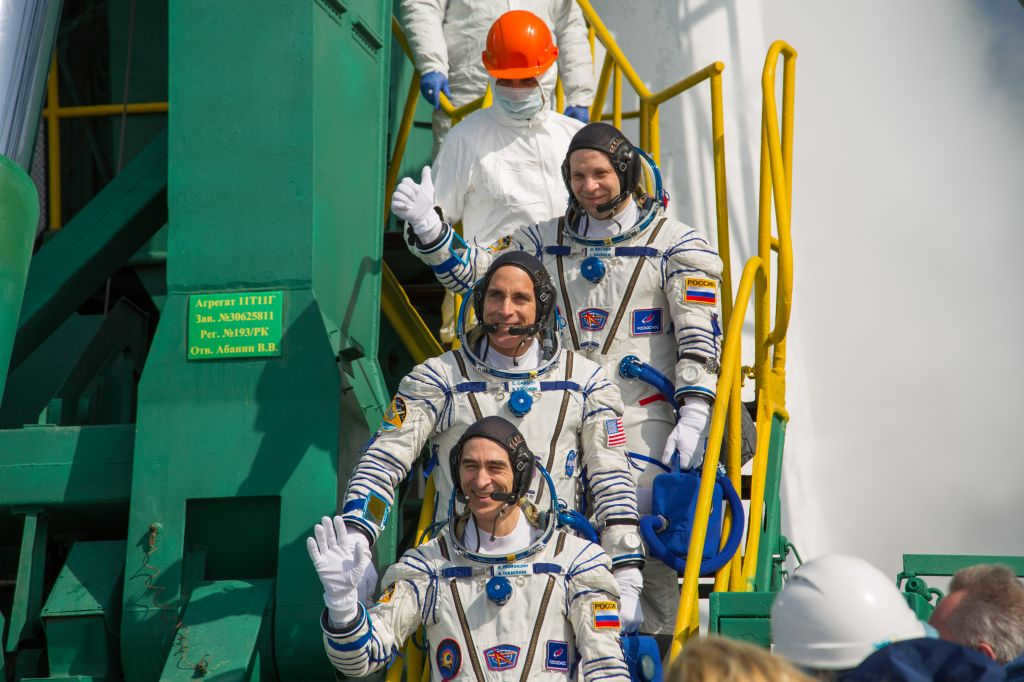
ISS-63 expedition crew
The requirements for admission today are not as strict as those imposed on the first astronauts. In the early days of space exploration, only military pilots under the age of 30 and shorter than 170 cm with a high level of physical fitness as a sports master were accepted into the squadron. However, there are still several mandatory requirements today. Firstly, you must be a citizen of the Russian Federation under the age of 35. Secondly, you must not hold dual citizenship or have residency in other countries, and you must not have any criminal record or violations of state secrets. Lastly, you must possess a suitable education.
Regrettably, Russia does not have a dedicated university for aspiring cosmonauts. However, one can pursue a specialized education in this field at institutions such as MAI, Bauman Moscow State Technical University, or the Space Research Department of Moscow State University. The space industry requires professionals in engineering, medicine, and biology, so if your educational background is in the humanities, you may not be eligible for admission to the cosmonaut squad at this time. Additionally, it is required to work in your field of expertise for a minimum of three years after graduation.
Priority is still given to pilots and individuals working in the rocket and space industry, as they possess the most comprehensive training and knowledge. Furthermore, fluency in at least one foreign language, a fundamental understanding of astronautics, and a genuine interest in space technology are essential qualifications. It is important to note that civilians have only been invited to join the squadron in three recruitment cycles, including the current one, while the rest have been exclusively for military personnel.
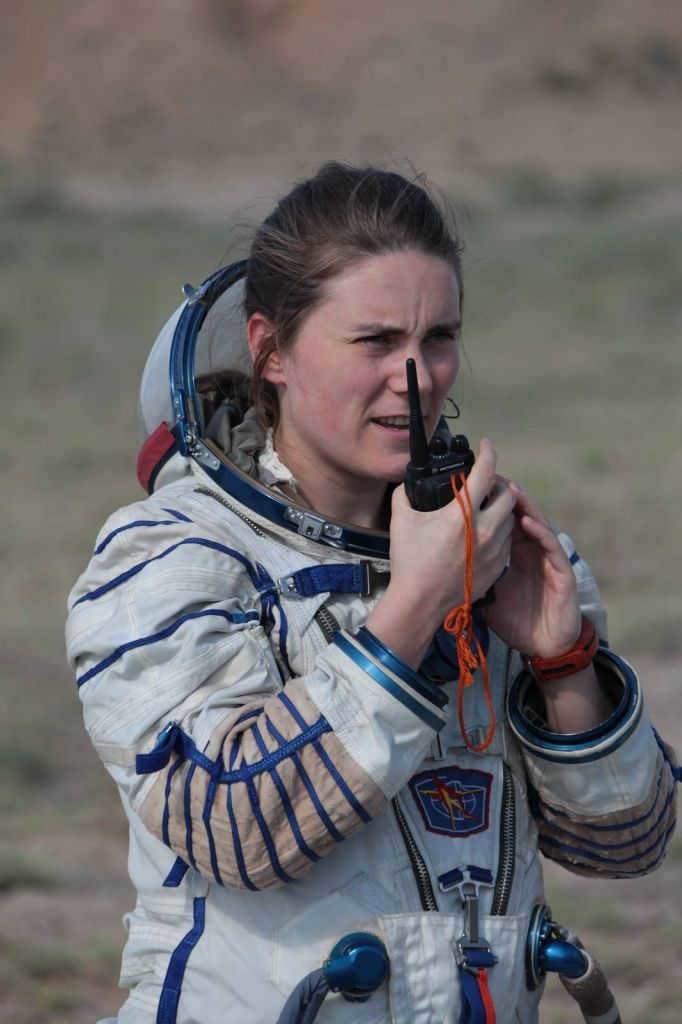
There is a scarcity of female cosmonauts. Currently, the Russian team consists of only one member, Anna Kikina, who joined in 2012. The team is open to welcoming more female members, but according to Roscosmos, there is a significantly lower number of female applicants.
When it comes to restrictions on anthropometric parameters, they have become quite extensive. These parameters include a height range of 150 to 190 cm, a weight range of 50 to 90 kg, and a maximum foot size of 46th. These dimensions are necessary in order to fit into a spacesuit and a space chair. Your health is evaluated much more strictly – it must be nearly perfect. If you have any issues with your vestibular system, then your chances of going into space are 100% off the table. A potential astronaut must have excellent physical fitness and meet the minimum exercise requirements listed in the regulations, which are partially in line with the TRP standards. Endurance, strength, speed, and agility are all key qualities for someone aiming to conquer space.
Daily schedule at Star City
Congratulations on successfully completing the selection process and joining the squadron. However, it’s important to note that this is just the beginning of your journey towards becoming an astronaut. Currently, you hold the position of a candidate and the next step entails two years of comprehensive education and training that adheres to the highest standards established by the pioneers of space exploration. Upon completion of this phase, you will be required to pass a state examination in order to attain the esteemed title of “test cosmonaut”.
This will be followed by an additional two years of specialized training in groups, which will include a multitude of tests and examinations. If you are deemed suitable for a specific crew, you will then embark on another one and a half to two years of training as part of the crew program. During this time, astronauts will undergo training in parachute jumps, experience high G-forces in a centrifuge, simulate weightlessness during flights, and even practice living in a simulated space environment underwater. Once again, a significant emphasis will be placed on acquiring theoretical knowledge and becoming familiar with the technology used on the International Space Station. It is essential for astronauts to have a thorough understanding of the layout and functioning of the Russian segment of the ISS, which is studied in Star City. Additionally, they will need to travel abroad on business trips to familiarize themselves with the foreign compartments of the space station.
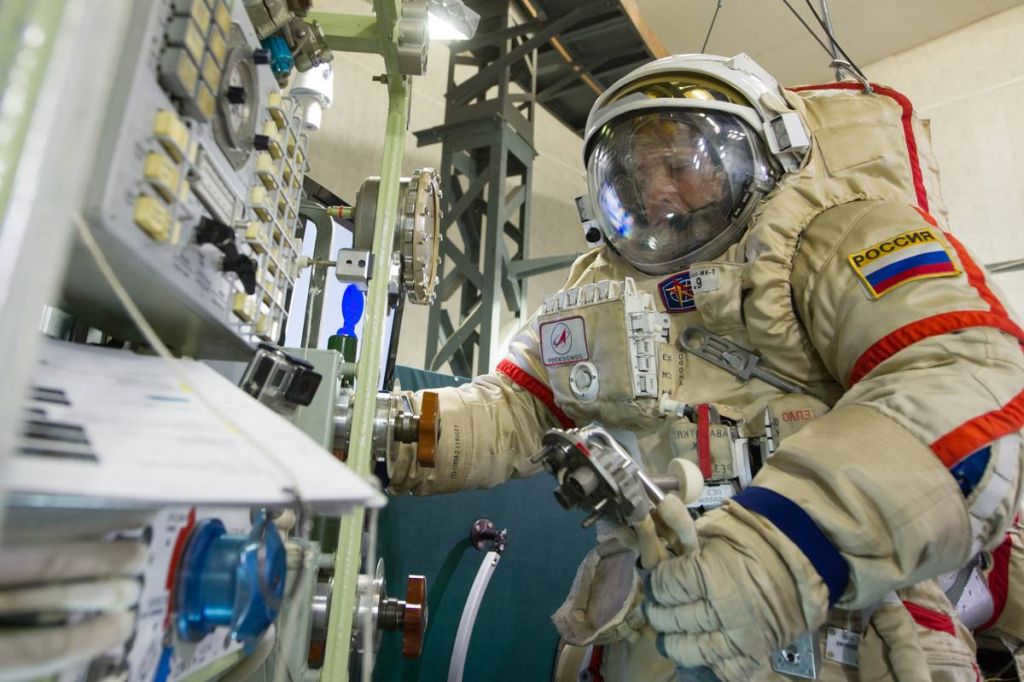
With each passing year, the landing of astronauts becomes more and more predictable. However, it is still crucial for the crew to possess the necessary skills to survive in extreme natural conditions. They are put through various challenges such as being thrown into mountains, left in deserts and snowy forests, and taught how to survive on water.
In order to meet the unique demands of space travel, meals for astronauts need to be balanced, healthy, lightweight, and easy to store and consume. That’s why astronauts are given the opportunity to familiarize themselves with unfamiliar food in advance. The modern astronaut’s food set consists of approximately 300 items, which are regularly replaced to provide variety. Interestingly, space food is no longer packed in tubes for long durations. Instead, convenient plastic containers and aluminum cans are used for this purpose. Tubes are still utilized for condiments like mustard or ketchup, which astronauts happily enjoy.
Superhero Training Simulators
In order to acquire the necessary skills and practice various stages of flight and space operations, superheroes rely on specialized simulators. Star City is home to a multitude of test facilities, many of which are one-of-a-kind in the world. Among these facilities, the complex simulators for manned spacecraft hold a significant place in the training of astronauts. These simulators have been developed by experts from the Research Institute of Aviation Equipment (NIIAO), which is now a part of KRET, since the 1960s. Over the years, the institute has designed more than 20 simulators for all types of domestic spacecraft, ranging from Vostok to Soyuz.
The Soyuz TPC simulator complex consists of approximately twelve devices. One of these devices is the TDK-7ST simulator, which is a sophisticated semi-natural modeling complex constructed using full-scale replicas of the crew compartments of the Soyuz spacecraft. The TDK-7ST is utilized by cosmonauts for evaluations, allowing them to assess their proficiency in piloting the Soyuz TMA spacecraft throughout all stages of the mission, including the processes of docking and undocking with the International Space Station, descending from orbit and landing, as well as responding to abnormal conditions and malfunctions of onboard systems.
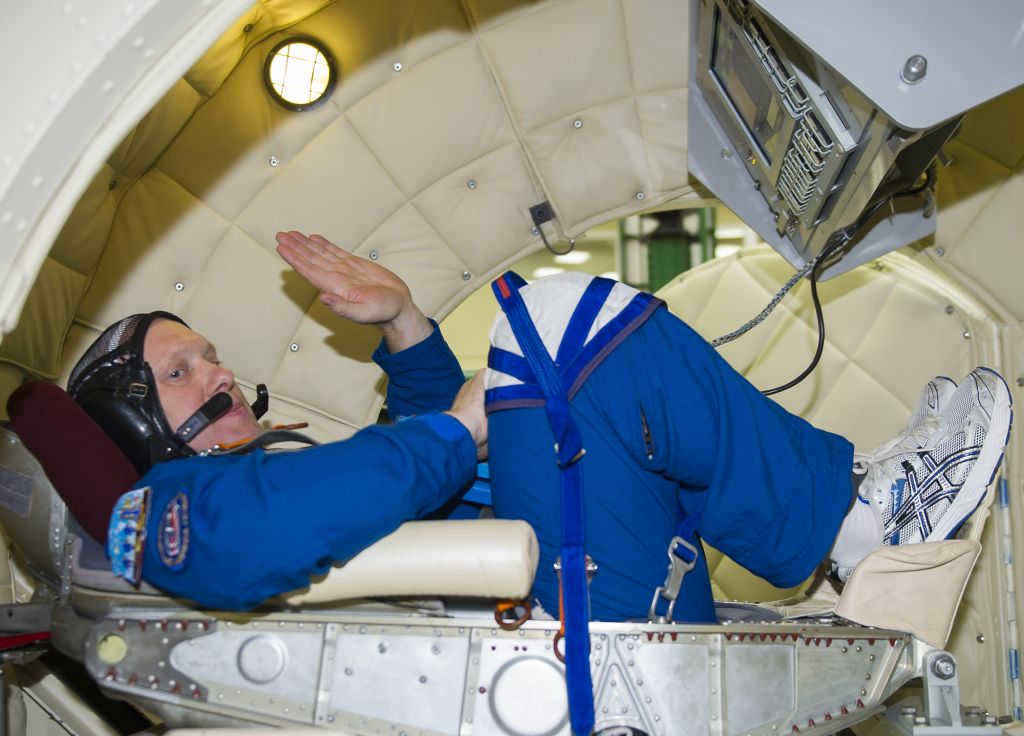

Aside from ship control, simulators also instruct aspiring astronauts on breathing techniques during high gravitational forces, navigating in zero gravity, venturing into outer space, and managing extended periods of isolation. To cater to these needs, the Center is equipped with state-of-the-art testing facilities, including flying laboratories, centrifuges, hydrolaboratories, barocameras, sign language chambers, and other cutting-edge equipment.
One more crucial stage in astronaut training is called “Exit”. It is the title of the simulator that is based on the Orlan-M spacesuit, which replicates a spacewalk. This examination requires immense physical stamina – one must exert a significant amount of effort to function in the 120-kilogram “Orlan”. Every effort to clench the fingers within the gloves is equivalent to a workout with an espandex. Furthermore, during a spacewalk, one must perform over a thousand such movements. The Orlan spacesuit was developed at the Zvezda Research and Production Enterprise, which is a part of the Technodinamika holding company of Rostec State Corporation.
Ticket to the Moon
However, even after completing all these phases, which can span up to eight years, there is still no guarantee that you will eventually be able to embark on a spacecraft bound for the stars. Out of the more than one thousand individuals worldwide who have successfully undergone the rigorous selection and training processes, only 566 have had the opportunity to venture into space. There are numerous factors that may prevent you from being assigned to a mission. One such factor is your physical condition, which can potentially change shortly before the scheduled flight, resulting in your replacement by an alternate. Additionally, it’s possible that you may not secure a spot within the current crew and will have to wait for a future opportunity.
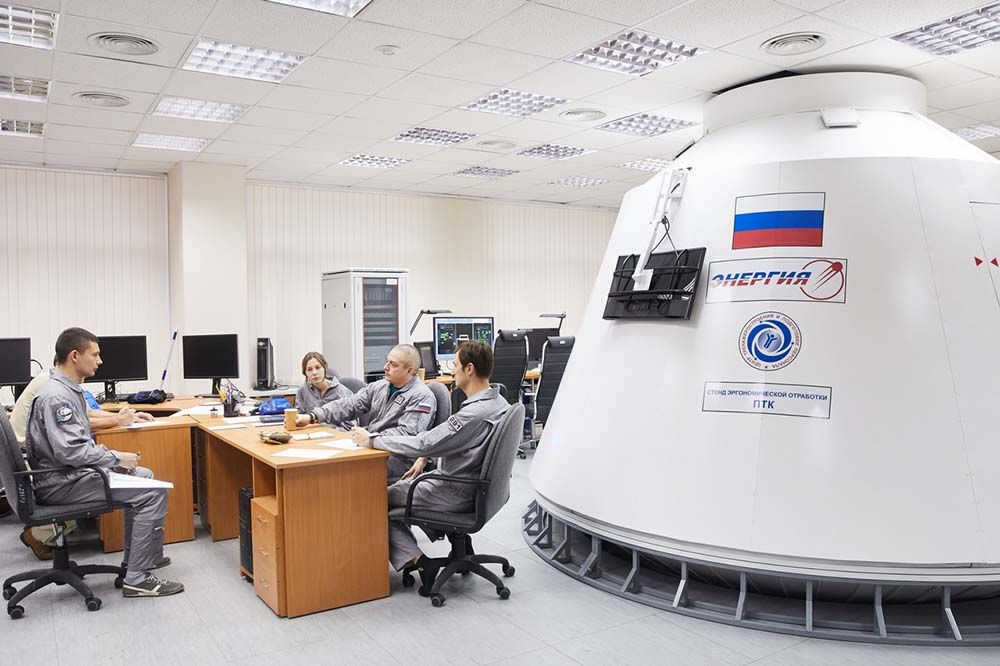
Present-day crews are primarily trained for missions to the International Space Station (ISS), which will remain the primary workplace for astronauts in the upcoming years. However, those who have applied this year have a genuine opportunity to become participants in Roscosmos’ “lunar” program. Its launch is scheduled for 2021. The new recruits will also become proficient in operating the state-of-the-art reusable spacecraft called “Federation,” which will be utilized for lunar exploration purposes.
It is worth noting that the ongoing selection process for the cosmonaut squadron will continue until June 1. Anyone is eligible to participate. Further details regarding the competition’s terms and conditions can be found on the official website of the Gagarin Cosmonaut Training Center.
All images in the article: Roscosmos
Associated occurrences
Parachute: the primary “tool” of a paratrooper
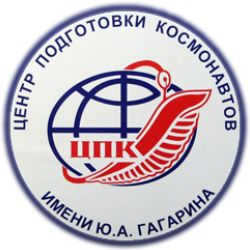
As you witness a rocket ascending into the sky, carrying astronauts on board, you might find yourself pondering about the process of becoming an astronaut. Where do they undergo training? How do they successfully complete flight tests? What subjects do they study for exams? And most importantly, what qualities do they possess to qualify as astronauts?
In this brief article, we will explore these questions and delve into the preparation required for the initial and subsequent space missions. If you are intrigued, let’s proceed further below.
Choosing the initial group of astronauts
The concept of space travel became a tangible possibility for the general public in the 1920s, thanks to newspaper articles featuring American inventor Robert Goddard and Romanian scientist Herman Obert. While people were just beginning to grasp the reality of space exploration, K.E. Tsiolokovsky was already diligently working on a rocket design in his office, envisioning a future where humans could venture beyond Earth’s atmosphere.
Approximately 30 years later, a significant meeting took place in early 1959 in the Soviet Union, marking a pivotal moment in space exploration. Attendees included esteemed scientists, representatives from various ministries and agencies. The primary focus of the meeting was the strategic preparation and selection process for the inaugural manned space flight.
Sergei Pavlovich Korolev expressed the following opinion:
For such a mission, pilots are the most suitable candidates, especially those from jet fighter aviation. A fighter pilot possesses a broad range of skills, including piloting, navigating, communicating, and managing the aircraft’s systems. Additionally, it is crucial that a fighter pilot has a military background, as it ensures they possess the necessary qualities of a future cosmonaut, such as focus, discipline, and unwavering determination to achieve their objective.
He jokingly added, “He is a creator and a destroyer, and he is a player. Practice has confirmed the accuracy of this decision. Korolev formulated the criteria for cosmonaut candidates as follows: they must be under 30 years old, in perfect health, mentally stable, physically enduring, excellent pilots, strong-willed, diligent, and curious. The technology available at that time determined certain physical characteristics: height should not exceed 175 cm, weight should be between 70-72 kg.”
During that time, very little was known about the effects of space travel on the human body, so the medical requirements for selection were extremely strict. The first director of the Cosmonaut Training Center, E.A. Karpov, referred to it as “over-selection.”
In order to determine the level of tolerance to various stresses, a series of functional stress tests were conducted, including tests in a barocamera and on a centrifuge. These tests were designed to uncover any hidden diseases or abnormalities that an individual may not even be aware of. Furthermore, the data obtained from these tests allowed for the assessment of an individual’s reserve capabilities and safety margin.
Yuri Gagarin once remarked about the commission that “selected” him to become a cosmonaut:
The commission had high standards. The initial physician specialized in ophthalmology. Our eyes were meticulously examined, searching for any hidden strabismus and assessing our night vision. We had to visit the ophthalmologist a total of 7 times, with each visit starting the process anew. Our ability to perform in challenging conditions was put to the test. We were asked to complete arithmetic operations using numbers from a specialized table. The speed and accuracy of our responses were also taken into consideration. Initially, the problem seemed straightforward, but suddenly a loudspeaker would interrupt, providing a distracting “voice” that hindered our concentration. It was quite challenging. Numerous doctors were involved in the process. They rotated us on specialized devices to assess our vestibular system and conducted thorough examinations of our hearts. Additionally, psychological evaluations were conducted. We were subjected to barocameras and centrifuges multiple times. These tests aimed to determine the extent of our memory and intelligence. Our overall perspective was also of interest to them.
At the initial stage, justifying such “excessive selection” was necessary because space held many unknown and potentially dangerous aspects. It was unclear if humans could survive there without harm to their minds. However, after Yuri Alekseevich Gagarin’s flight, these fears dissipated. The program’s technical leaders began expressing doubts about the necessity of such strict requirements, and their reduction happened surprisingly quickly. S.P. Korolev believed that the “medical” aspects were impeding the program’s progress and even made statements like: “It’s time to subject people to less torture in the rabbit program.”
With the accumulation of knowledge about the well-being of humans in outer space, there has been a development of newer and more advanced manned vehicles, along with changes in the selection and training system. While the requirements for personal qualities and health remain strict, some extravagant tests and excessive loads have been eliminated.
Contemporary Training
The contemporary training system is vastly different from its early counterpart, much like the distinction between the first Vostok spacecraft and the ISS.
The entire training process is divided into stages: general space encompassing group training and specific training.
The general space training period lasts for two years, during which the fundamentals of the astronaut profession are established. Aspiring cosmonauts study the scientific disciplines that serve as the bedrock of their profession. Initially, the subjects were limited: rocket and space technology, the basics of space medicine, astronomy, geophysics, and astronavigation. Additionally, they learned about the construction and functioning of the Vostok spacecraft. There were also classes on developing photography and filmmaking skills.
As the complexity of space technology increased and the scope of work, research, and experiments conducted in orbit expanded, the training also evolved. It now includes sections on information-computer systems and the basics of testing, as every space flight is essentially a test flight. Some astronauts who were taking the 101st exam complained, “It’s absurd! We were selected based on our health, but they’re asking us about our intelligence!”
Once the training is complete, astronaut candidates undergo a state examination, and those who pass are granted the qualification of either “test cosmonaut” or “research cosmonaut.”
In the early years of manned spaceflight, the focus was primarily on medical and biological training, which accounted for nearly two-thirds of the training time.
Centrifuge: training for overloads
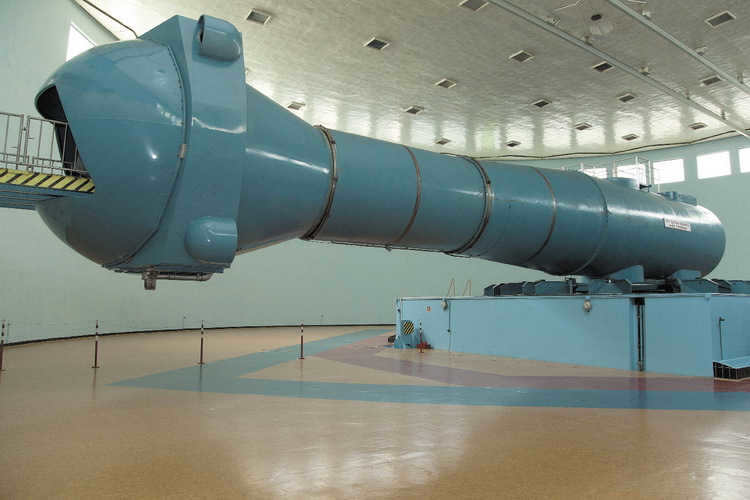
To replicate the effects of increased gravitational forces, a specialized centrifuge is utilized. This centrifuge resembles a massive dumbbell, with a testing module located at one end and a counterweight at the other.
As the new millennium approached, spacecraft technology advanced significantly, leading to a relaxation of requirements. However, this type of training remains crucial as cosmonauts experience heightened gravitational forces during reentry, particularly after extended periods in a weightless environment. In abnormal or emergency scenarios, these forces can be even more intense.
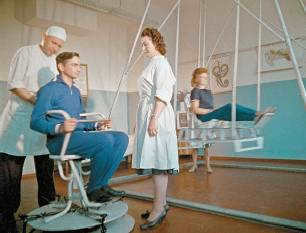
Vestibular training is the process of preparing for weightlessness, and it can be quite unpleasant. Its main goal is to help astronauts adapt to the feeling of weightlessness during the first few days of their spaceflight, minimizing the duration of this adjustment period.
Two well-known devices used for vestibular training are the “Barani’s chair” and the “Hilov’s swing”.
The examination is conducted according to the following pattern: one minute of spinning – one minute of rest. While spinning, the astronaut is required to gradually lower and raise their head; as a result of the combination of these movements, Coriolis acceleration is induced, which has a negative impact on the vestibular system – the organ responsible for providing the brain with information about the body’s orientation in space. Symptoms such as nausea, vomiting, and excessive perspiration may manifest. The test entails enduring 15 rotations, and difficulties often arise during the fifth rotation. Despite this, individuals are advised to report to the physician that they are feeling well – failure to do so would result in being deemed unfit.
Swing, a concept introduced by renowned Soviet otorhinolaryngologist K. L. Khilov, differs from the traditional swings that move in an arc. Instead, it moves parallel to the ground, resulting in linear accelerations that stimulate the vestibular system.
To better cope with the head rush caused by weightlessness, training in the anti-orthoposition is conducted. The astronaut is positioned on a specialized rotating table, where the angle is adjusted to lower the head downwards and then returned to its original position.
Barocamera
can be paraphrased as “Camera of the Baroque period”.
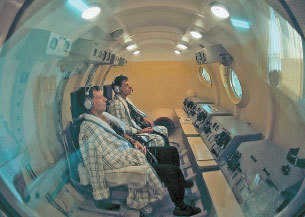
While a spacecraft is in flight, a synthetic atmosphere is generated, and its characteristics can undergo significant changes in the event of any abnormal or emergency situations (such as a decrease in oxygen levels or a sudden drop in pressure). To account for this, astronauts undergo testing in a barocamera. They are subjected to a simulated altitude of 5000 meters without the use of an oxygen mask to assess their ability to withstand oxygen deprivation. These situations effectively reveal any underlying pathologies as well as the body’s reserve capacities.
Thermal Camera
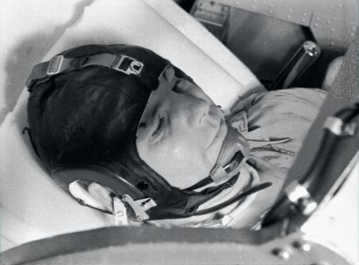
When preparing for the initial manned space flights, there was concern about a significant rise in temperature inside the spacecraft during re-entry, as it travels through a plasma stream with temperatures reaching several thousand degrees. Additionally, there was the possibility of unexpected failure in the thermal control system of the spacecraft or orbital station.
To test the astronaut candidates’ ability to withstand high temperatures, they are subjected to a thermal chamber. Initially, the test is conducted at a temperature of 70°C and a humidity level of 10%. The doctor closely monitors the subject’s condition using instruments and visual observation.
To perform this job, significant physical effort is required, which results in the production of a considerable amount of heat by the human body. Naturally, the spacesuit is equipped with a system for regulating temperature, but on certain occasions, in order to successfully accomplish their planned tasks, astronauts may have to work under extreme conditions that push the limits of the life support system, ultimately leading to failure. As a result, in preparation for spaceflight, it is crucial to firstly determine the individual thermal stability of each astronaut and secondly, to condition their bodies to withstand adverse effects. To assess their resilience, tests are conducted at a temperature of 60 ° C and a humidity level of 50% for a duration of one hour.
Surdocamera
can be rewritten to create unique content using the English language while preserving the HTML markup.
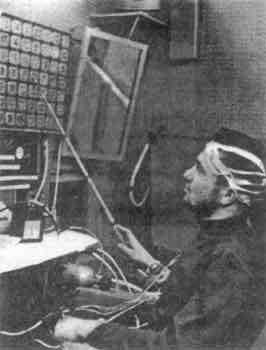
Prior to the inaugural voyage, there was particular apprehension about the psychological well-being of individuals in the space environment. The potential impact of the absence of familiar stimuli, particularly in regards to hearing and vision, remained uncertain. It was hypothesized that the spacecraft would be completely devoid of sound, and the vast expanse of space visible through the portholes would appear devoid of depth. The presence of other unfavorable and potentially hazardous, unpredictable factors was not ruled out. This significant impact alone could lead to mental disorders even in terrestrial conditions. However, in space flight, the negative effects are heightened due to weightlessness. Being confined to a small, enclosed space while fully comprehending the detachment from Earth also places a significant mental strain, further intensified by the constant anticipation of danger.
The ability of the human mind to withstand such influences is examined in a surdochamber (derived from the Latin word surdus, meaning “deaf”) – a specialized room that is completely soundproof, with dim artificial lighting and walls that are designed to block out all external noise. This room is used for observing and studying the reactions of astronauts.
Practice on simulators and platforms
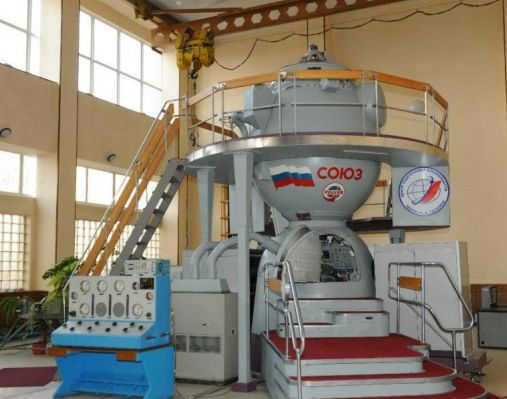
The training programs for pilots and astronauts share many similarities, but there are also notable distinctions. Pilots undergo a theoretical course and ground simulator training before progressing to training flights with an instructor, followed by control flights. Only after completing these steps are they given full responsibility for operating an airplane. The first solo flight is a momentous occasion in a pilot’s career.
Astronaut training, on the other hand, cannot be structured in the same manner, as their first flight is already independent. Instead, astronauts rely on technical training methods such as various stands and simulators to acquire the necessary skills.
In contemporary times, the sciences that study human activity within human-machine systems extensively employ the concept of a “flight image” as the foundation of the training process.
This concept encompasses understanding of actual scenarios, various possible courses of action, characteristics of objects, and control tasks, as well as the consequences of both correct and incorrect actions, among other factors. This knowledge is crucial, especially considering the constantly changing conditions.
Simulators aim to create a “flight simulation” that closely resembles real-life situations, requiring the cosmonaut to respond accordingly. The cabin interior is designed to be nearly identical to the actual spacecraft, even including a realistic view out the porthole, functioning noises of equipment, and simulated dynamic processes. However, replicating certain physical aspects of space travel, such as weightlessness, and inducing stressful situations, proves to be the most challenging in ground-based conditions.
The training process incorporates two distinct categories of technical tools. The initial category encompasses stands and devices that simulate various space flight factors such as overloads, weightlessness, and low pressure. These tools are commonly referred to as “exogenous simulators“. Examples include laboratory aircraft, hydro labs, soundproof chambers, pressure chambers, as well as a range of gymnastic equipment like trampolines and balance beams. The second category consists of simulators and workbenches that allow for the practice of controlling ship’s equipment at all stages of the space flight. This includes tasks such as orbital insertion, spacecraft orientation based on the Sun, Earth, stars, and planets, and utilizing data from ground services. Additionally, it encompasses skills such as search, approach, docking, undocking, descent from orbit, and the execution of special tasks.
Mastering the art of ship control step by step
The initial purpose of the space simulator was to provide training for controlling the Vostok series spacecraft, which was later adapted for preparing astronauts for Voskhod missions. The subsequent development involved the creation of a sophisticated simulator for Soyuz crews and a specialized simulator specifically designed for practicing the approach operation. This endeavor proved to be quite challenging, considering that the ship itself was a completely new manned vehicle with vastly enhanced onboard systems. In fact, the complexity of these simulated systems often exceeded that of their actual counterparts.
The need to expand the scientific program necessitated the development of new simulation platforms. These simulators and platforms were then integrated into a unified training and modeling complex, utilizing shared systems such as computing and information technology. This design of technical resources enabled the simultaneous operation of multiple practical devices, leading to a substantial reduction in training time.
The training process commences with an examination of the cabin interior and the arrangement of controls and informational resources. Astronauts then practice the logical sequence of actions required to solve various tasks. Following this, they acquire the necessary skills to perform individual operations through the utilization of a diverse range of stands and simulators.
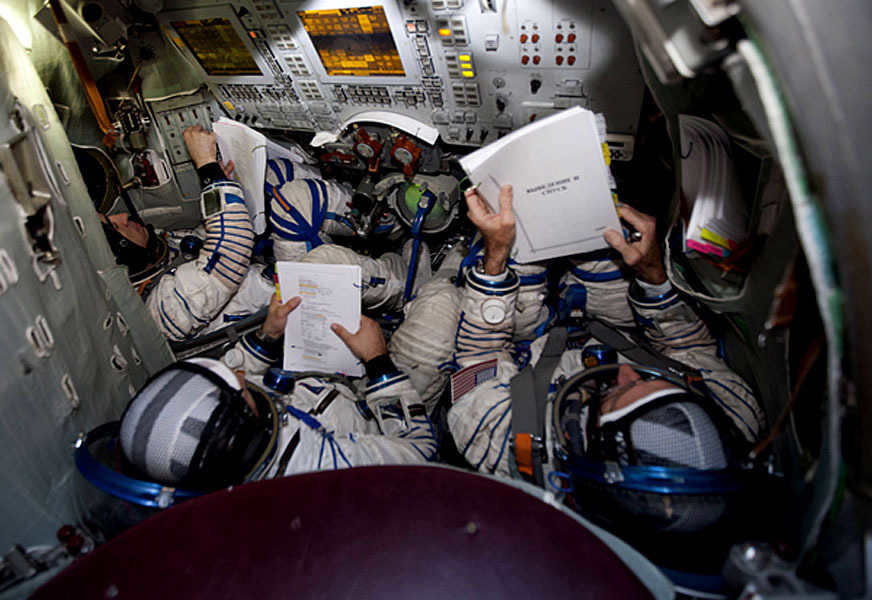
Oversee the entire complex
A complex simulator is one of the primary methods utilized for crew training. It provides astronauts with the opportunity to familiarize themselves with onboard systems, learn detection and troubleshooting techniques, practice interacting with ground control points, and master manual control of the spacecraft.
The control computer allows for the simulation of various abnormal situations, ensuring that astronauts are well-prepared for any potential emergencies. A specific simulator is even available to replicate an orbital station.
Ultimately, the entire crew must undergo a state exam, the results of which determine their eligibility for spaceflight.
The State Commission, which is composed of experts from the Training Center and space equipment manufacturing companies, administers the exam. The level of difficulty and the conditions for passing the exam are the same as those for the training process.
Getting Ready for Outer Space Missions
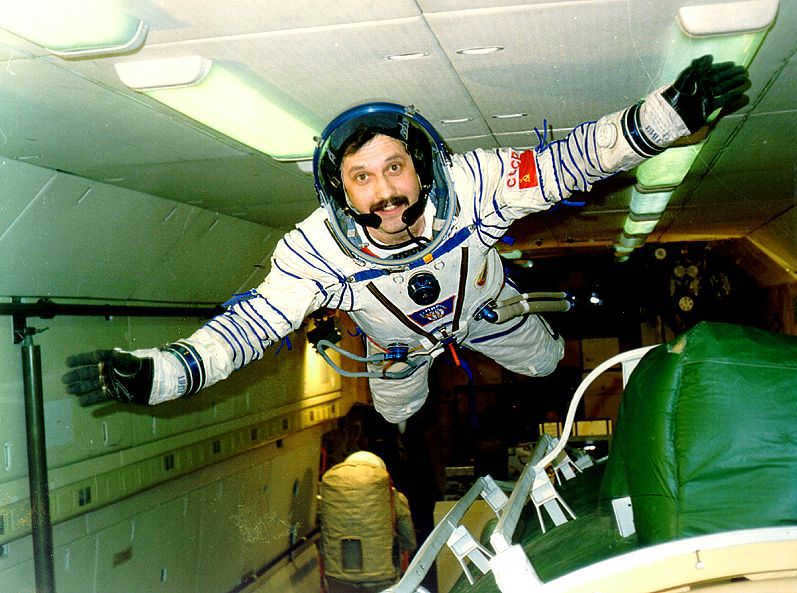
The preparation of astronauts for their work in outer space is likely the most challenging task. This is because creating a prolonged period of weightlessness, lasting more than a few tens of seconds, is nearly impossible on Earth. Various methods have been developed to simulate this condition, although none of them are perfect. These methods are utilized to practice specific tasks associated with spacewalks.
The most pure form of weightlessness occurs during an airplane flight on a parabolic trajectory. Initially, the training was conducted using a MiG-15 fighter jet. During each flight, the aircraft would make three or four parabolic arcs, with each arc lasting approximately 40 seconds in a weightless state. The tasks assigned during these arcs were relatively simple. On one arc, the participants were required to perform a pen test, which involved writing their name, surname, date, and signature. This sample was then compared to a preflight sample to detect any potential fine motor coordination disorders. On another arc, participants were offered space food from a tube to taste. On the third arc, they were instructed to transmit a specific phrase via radio. Subsequently, a flying laboratory was developed based on the Tu-104 aircraft, providing ample space for participants to freely experience weightlessness and practice various flight tasks.
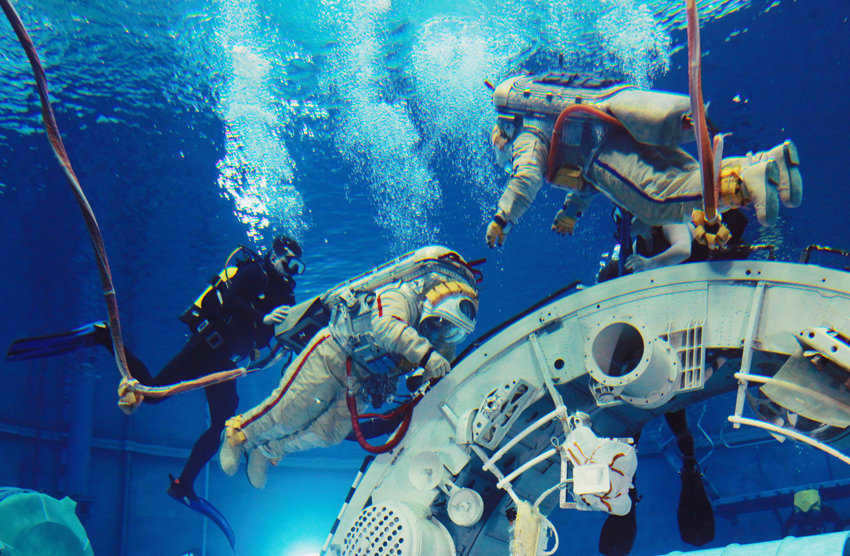
The most efficient method of simulating weightlessness involves the creation of hydro weightlessness. While hydro weightlessness in the aquatic environment differs significantly from its counterpart in space, test pilots are able to remain in this state for virtually unlimited periods of time and have the ability to move freely in any direction. All maneuvers and procedures are practiced in real-time.
In 1965, the Cosmonaut Training Center constructed a hydro pool and established a hydrolaboratory – a comprehensive facility equipped with advanced technological equipment, specialized systems, apparatus, and machinery. The spacesuits utilized for training purposes closely resemble standard-issue suits. The life support system suit is replicated by a mockup that accurately mimics the dimensions of the authentic suit.
Air and water are delivered to the thermal management system through hoses. Working underwater is typically accompanied by a certain level of risk, thus astronauts and testers are safeguarded by scuba divers. Training in a hydro environment closely simulates the emotional stress and energy expenditure experienced during actual space flights.
Training for Flight and Parachuting
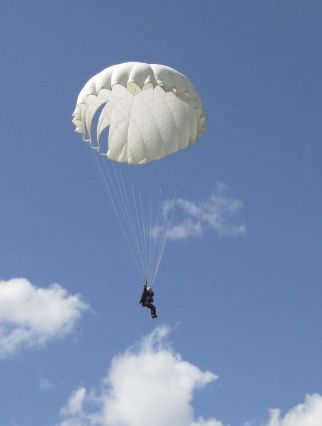
Flight and parachute training play a crucial role in the professional development of an astronaut. The training program includes flights on advanced fighter jets and heavy transport aircraft. However, the main objective is not to become a skilled pilot, but rather to cultivate the necessary qualities for the role. Flying planes helps develop spatial orientation and the ability to make quick decisions. It also enhances skills in operating controls and instruments, improves attention, adaptability, and stamina when performing repetitive tasks. Moreover, it fosters the ability to multitask and handle various control-related challenges simultaneously.
The task that poses the greatest psychological challenge is the one that requires determining or computing (through arithmetic calculations) the precise moment for deploying the parachute based on ground signals, as it entails real risk. Naturally, if the parachutist fails to initiate the parachute deployment in a timely manner, the automatic device will take care of it. The individual engaging in these exercises experiences a state of stress that closely resembles the one encountered in an emergency situation aboard a spacecraft, where there is insufficient time to evacuate.
Trials of survival
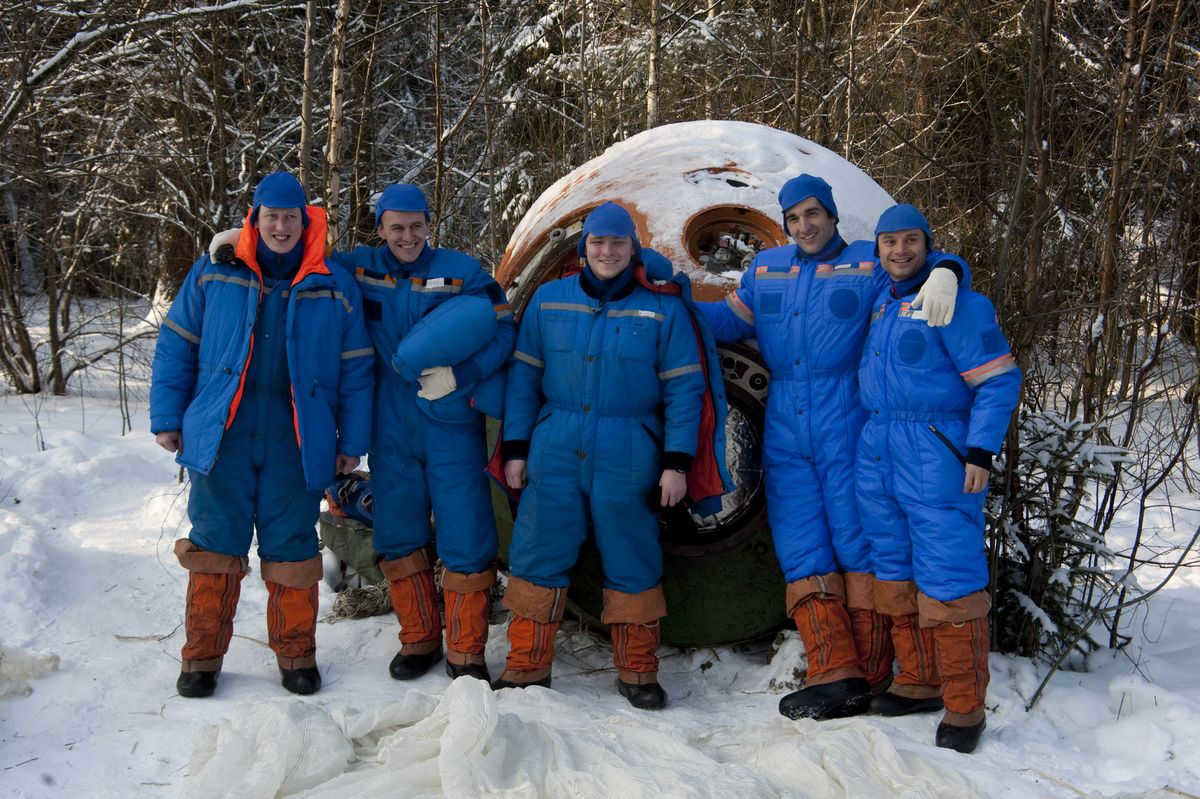
The content of “survival tests” is subject to change, incorporating various surprise elements, but the core remains consistent – preparing for overcoming any challenges and unforeseen circumstances, both mentally and physically.
These trainings take place in diverse environments such as the taiga, desert, mountains, and at sea. For instance, participants may be dropped off from a helicopter onto a scorching sand dune under the unforgiving sun. The objective is to survive with minimal equipment and limited provisions, and ultimately make it to the doctors’ and examiners’ base camp. In this scenario, it is crucial to effectively manage one’s energy and water resources, while also safeguarding against extreme heat and sandstorms.
Conclusion
Selection of astronauts is an ongoing process that occurs at every stage of training and throughout their time in the squadron. Even after passing a rigorous initial screening, it remains incredibly challenging to acquire the necessary skills and cultivate the appropriate personal qualities.
All forms of training, all the technical resources utilized, and the collective efforts of the Yuri Gagarin Cosmonaut Training Center are dedicated to thoroughly preparing individuals for the highly demanding and immensely responsible task of spaceflight and work in Earth’s orbit.





